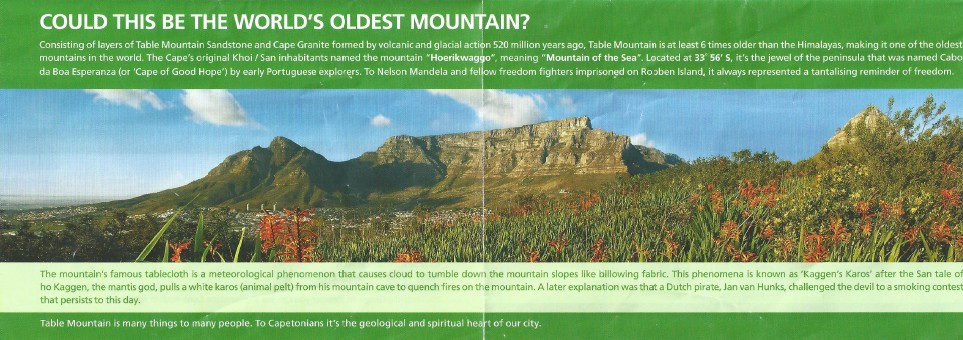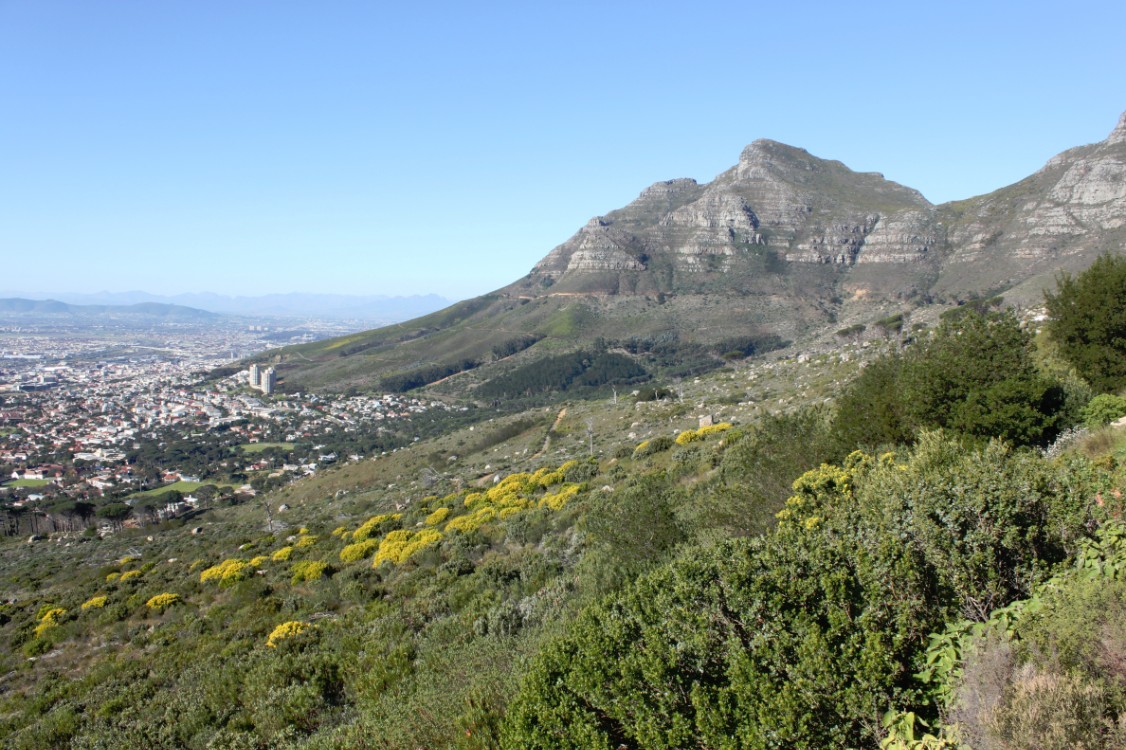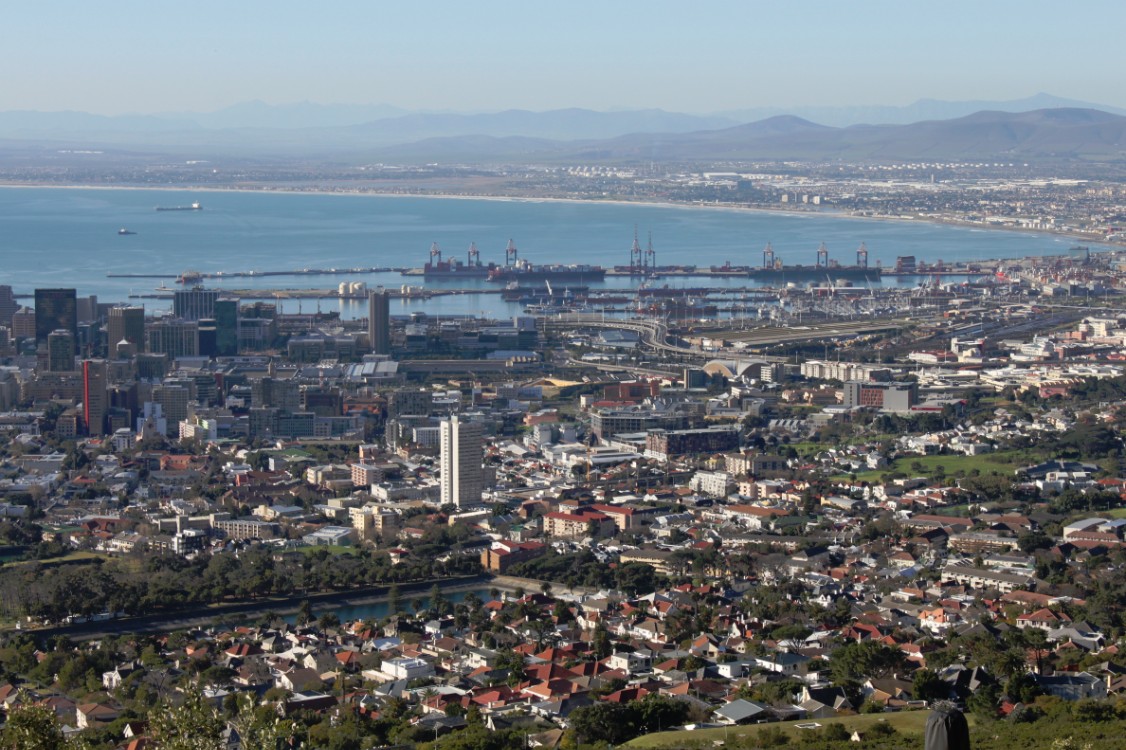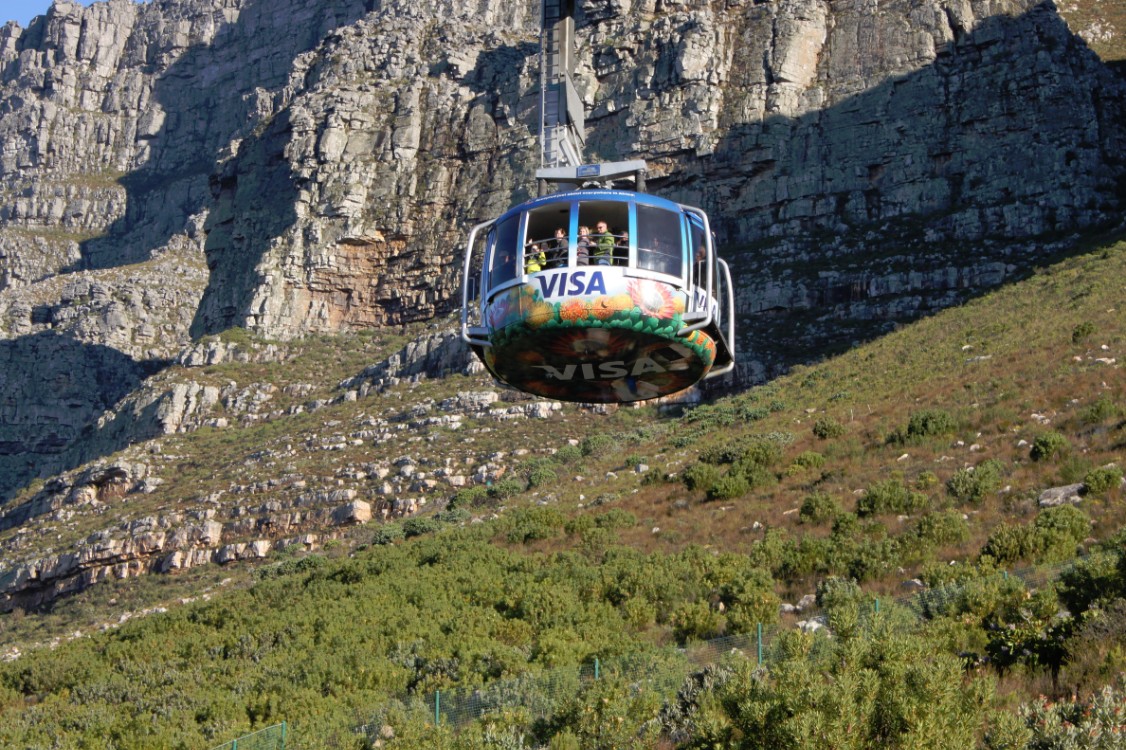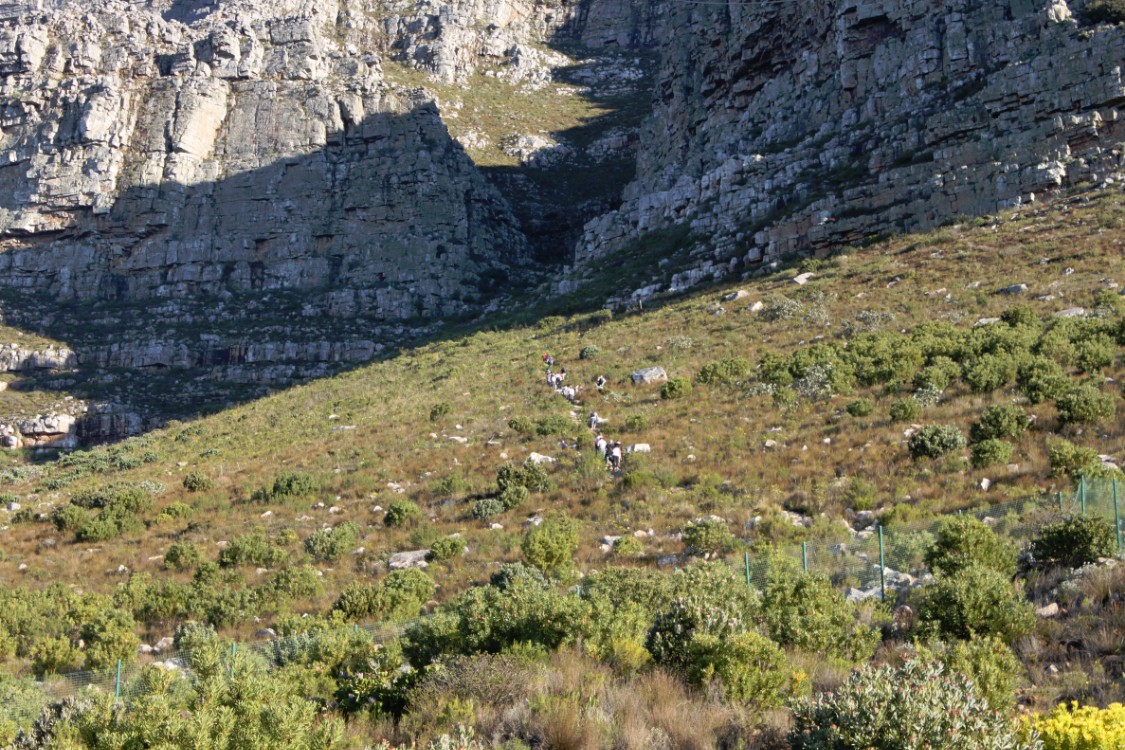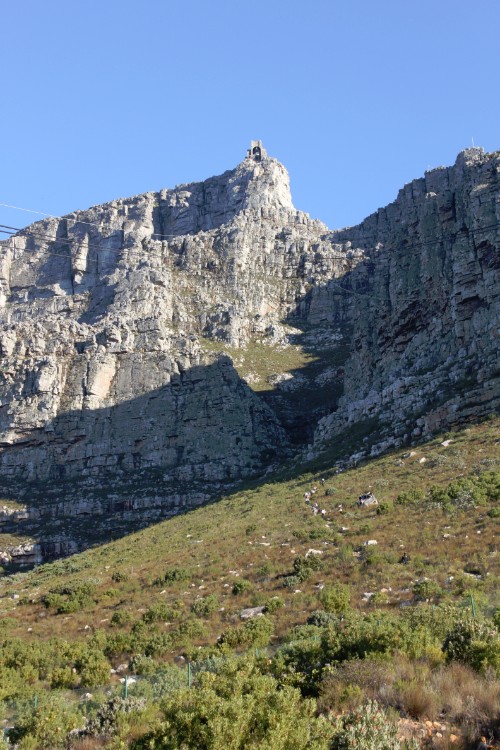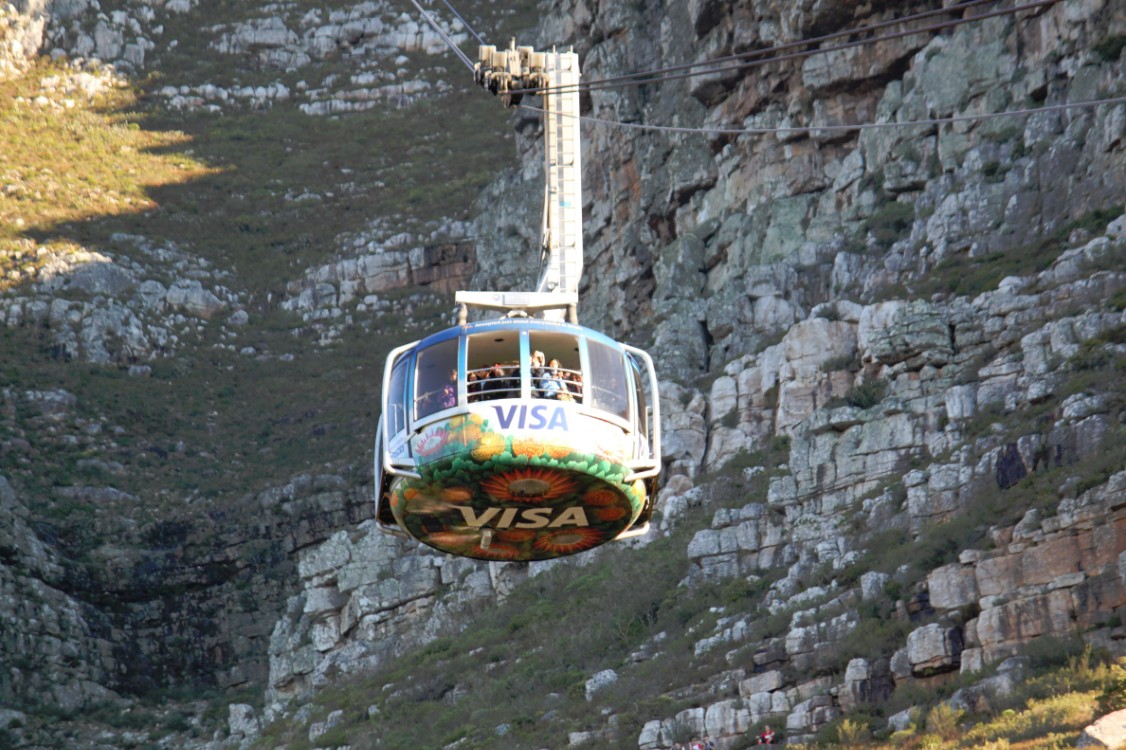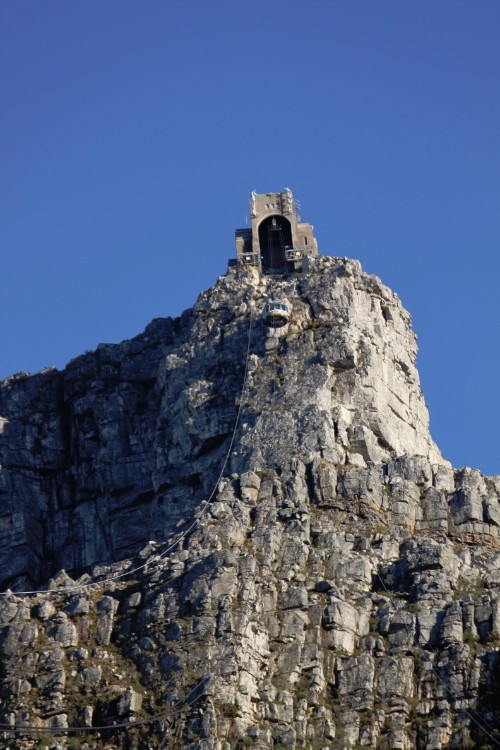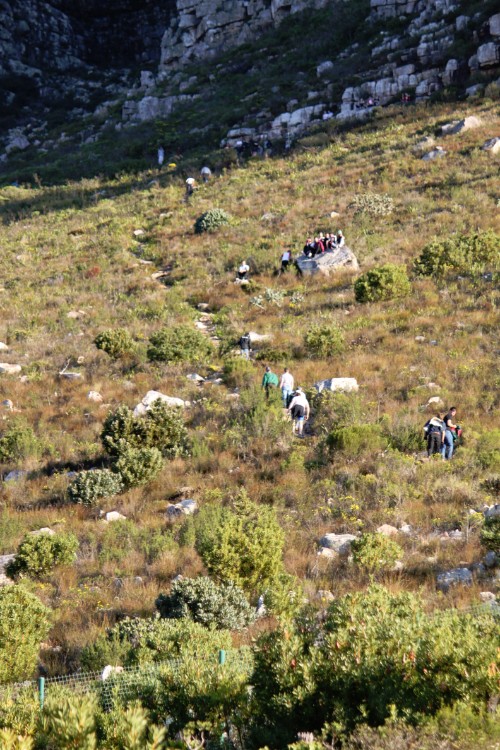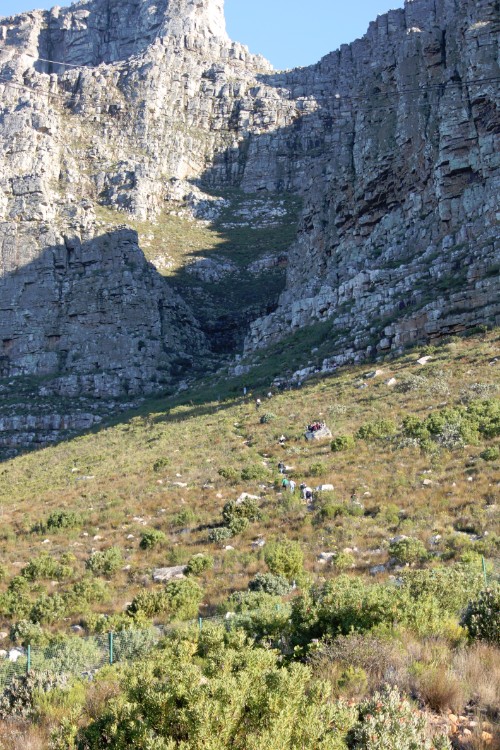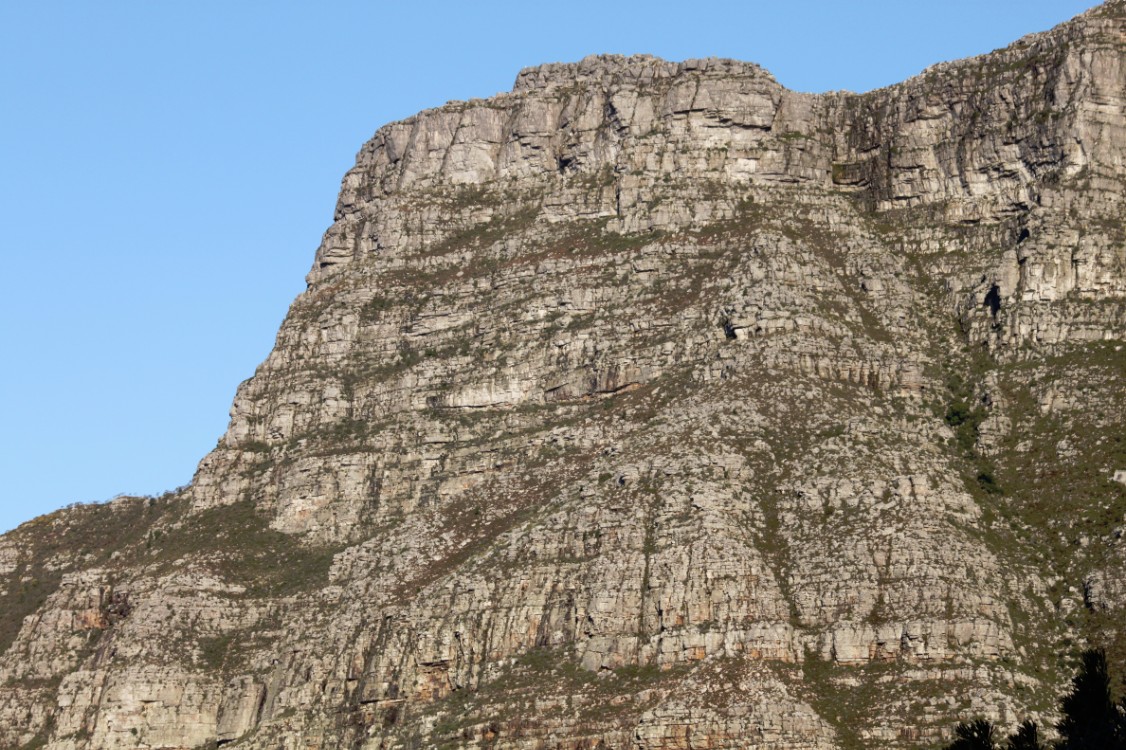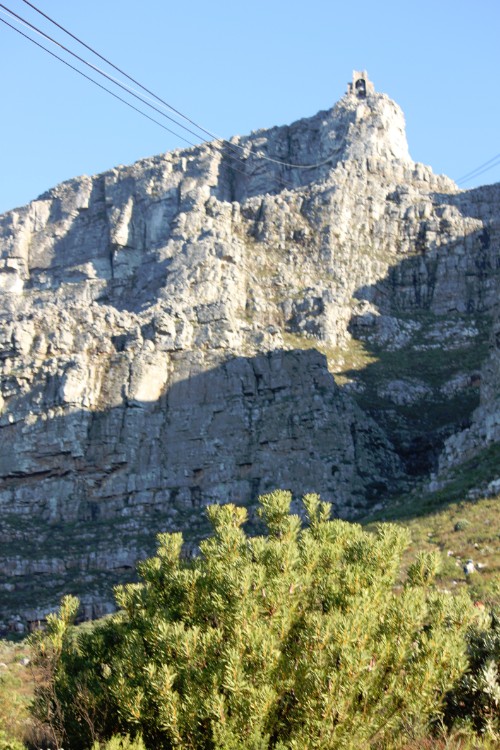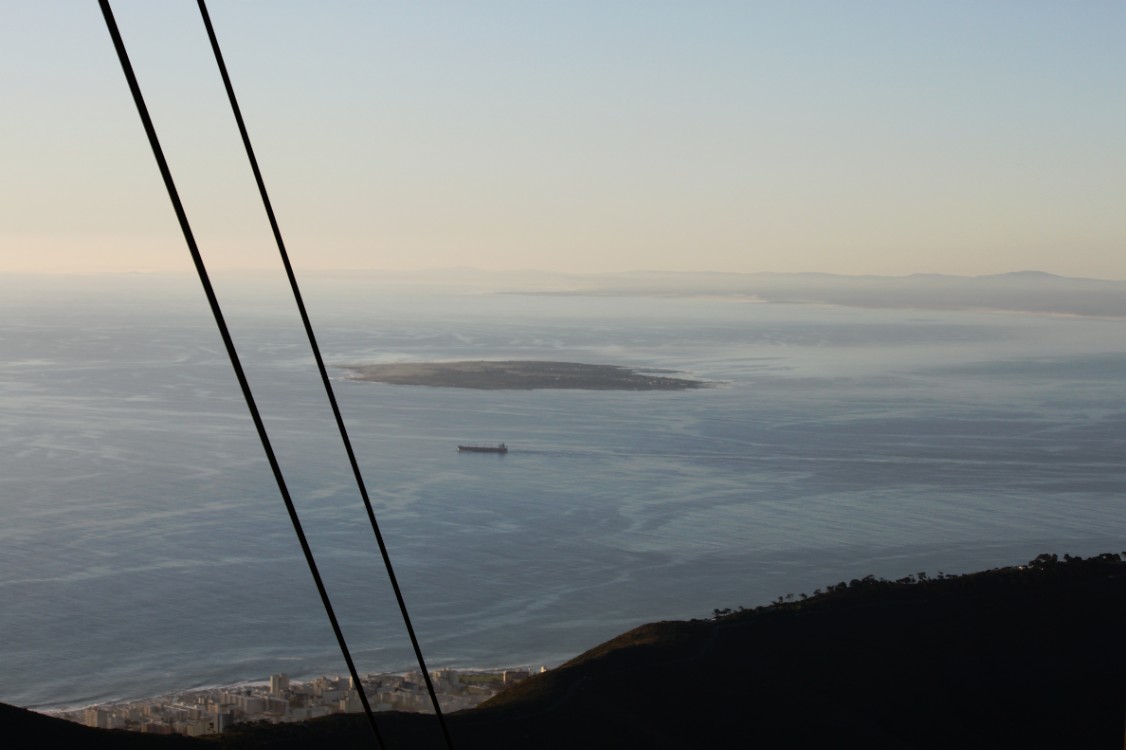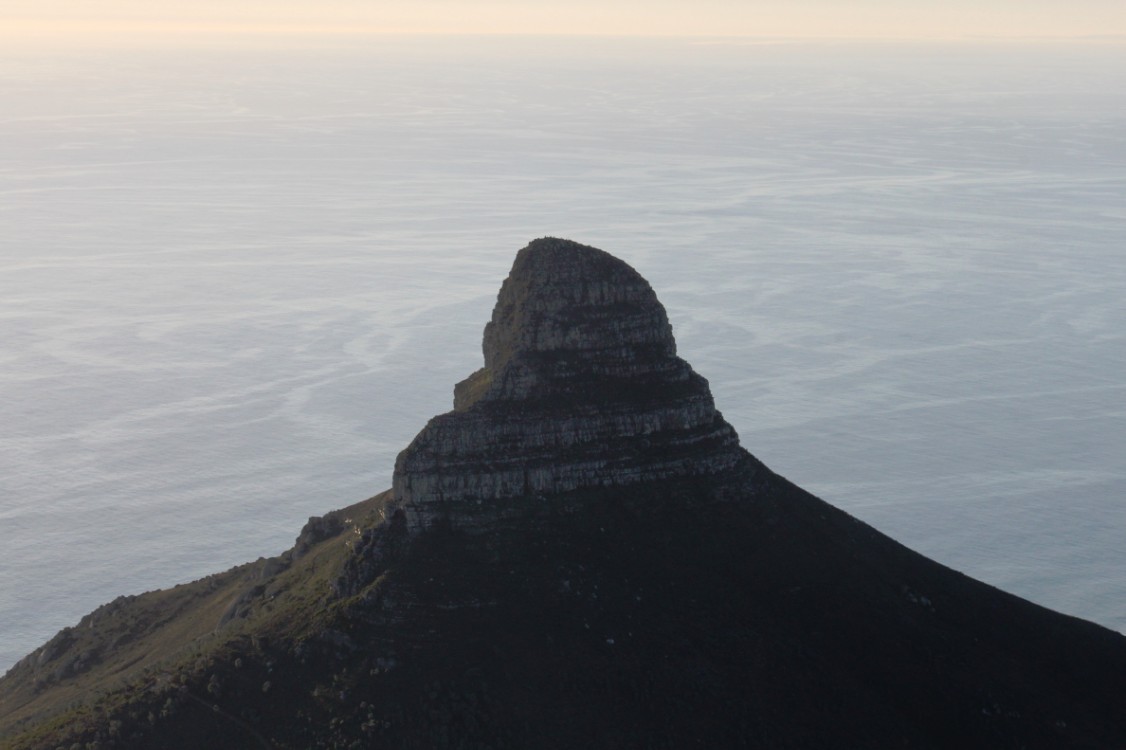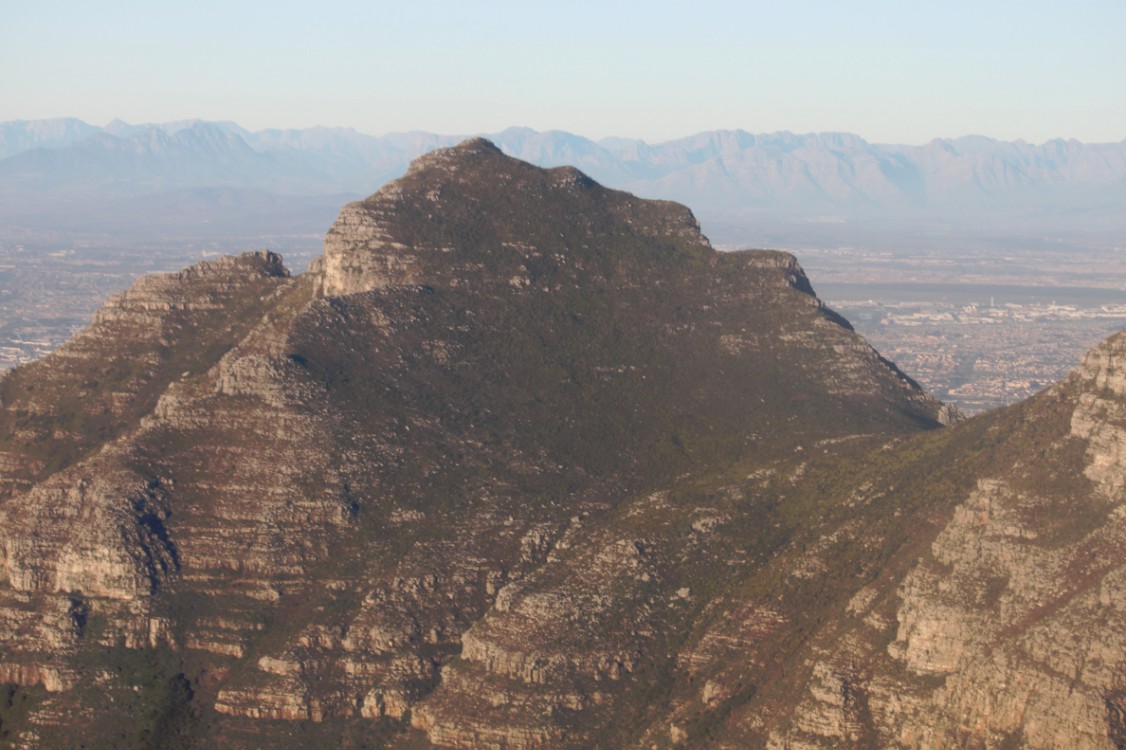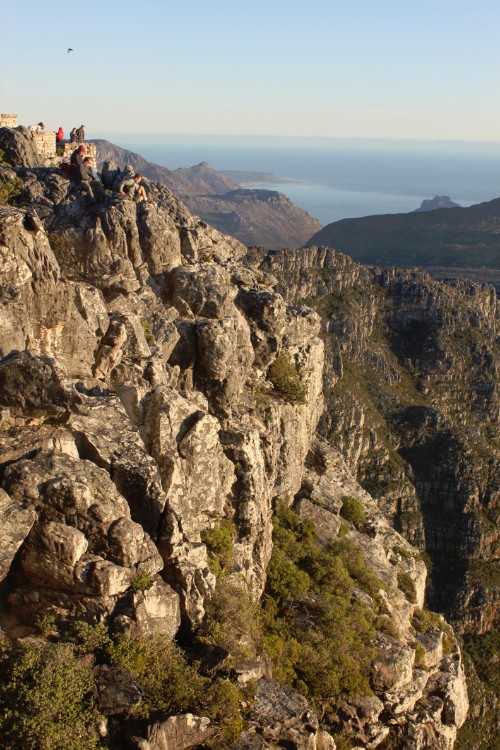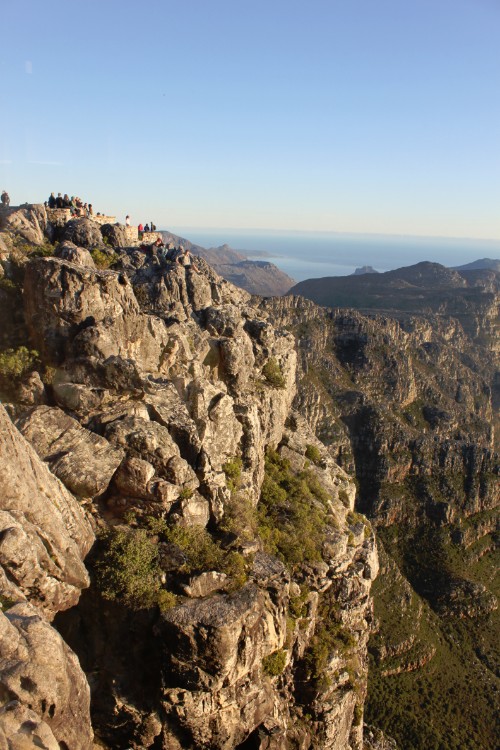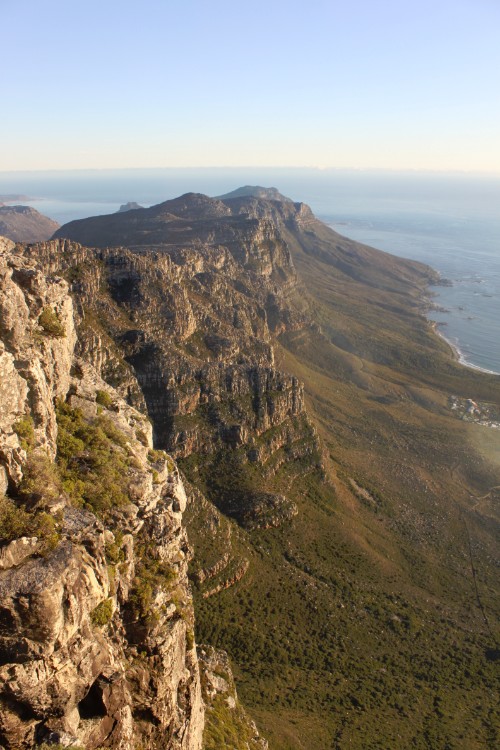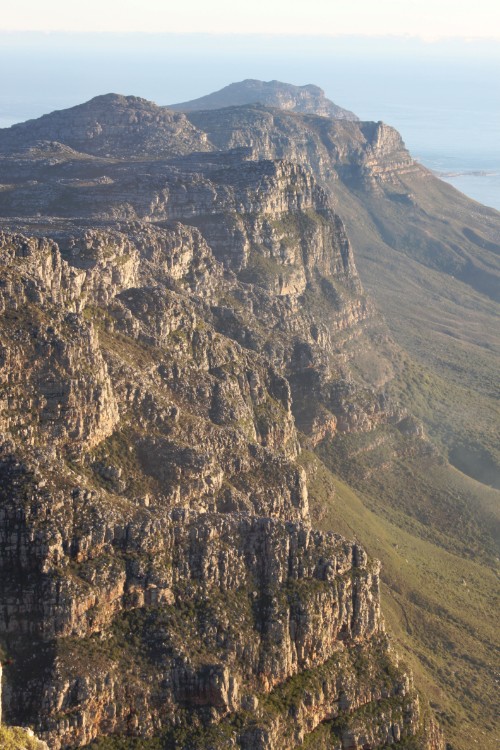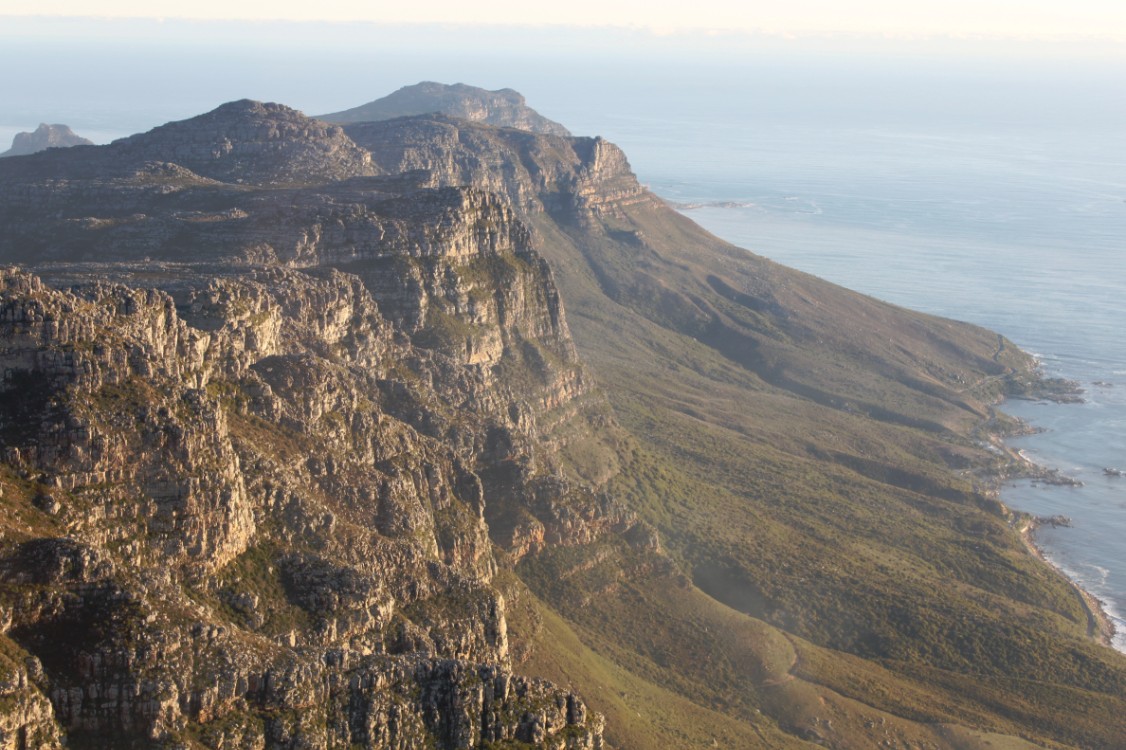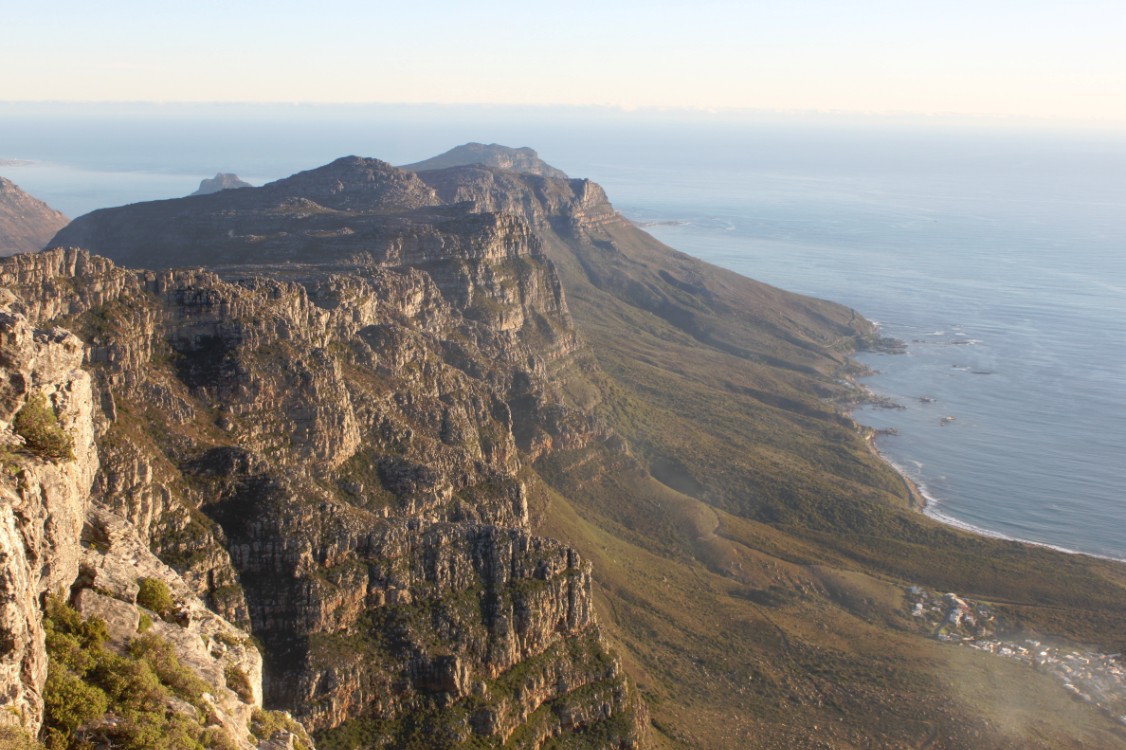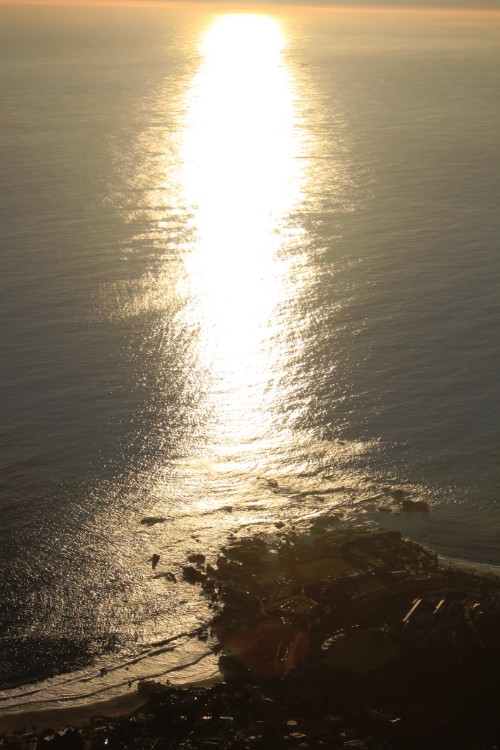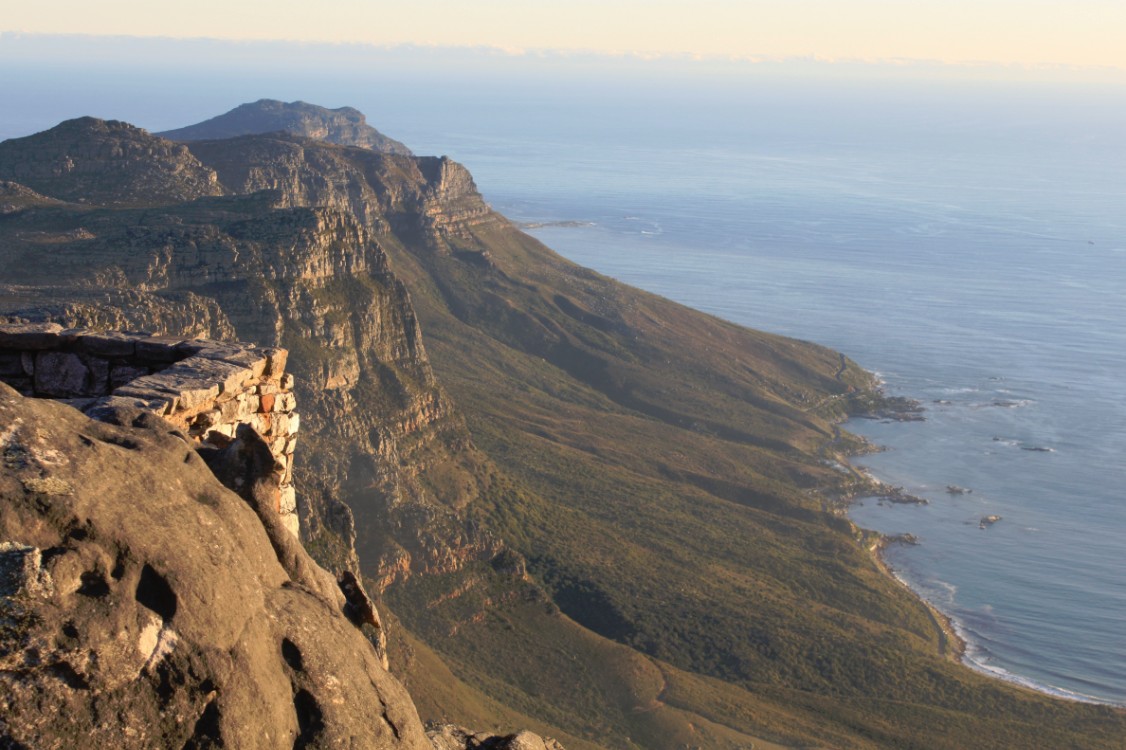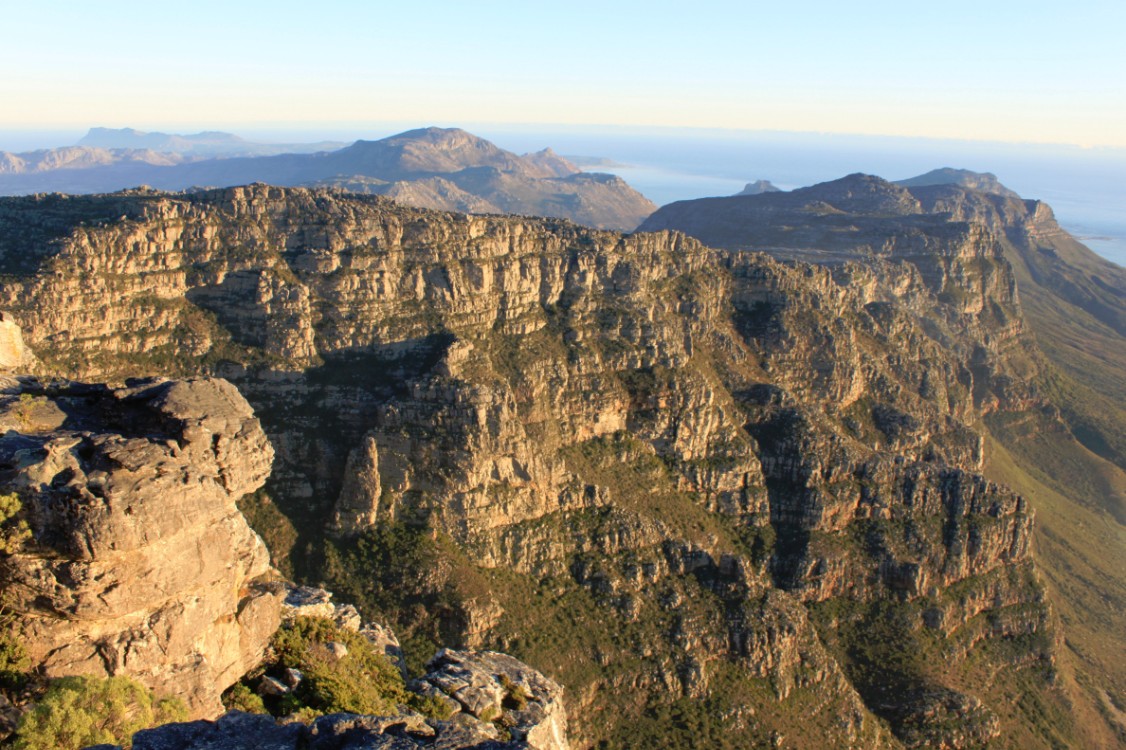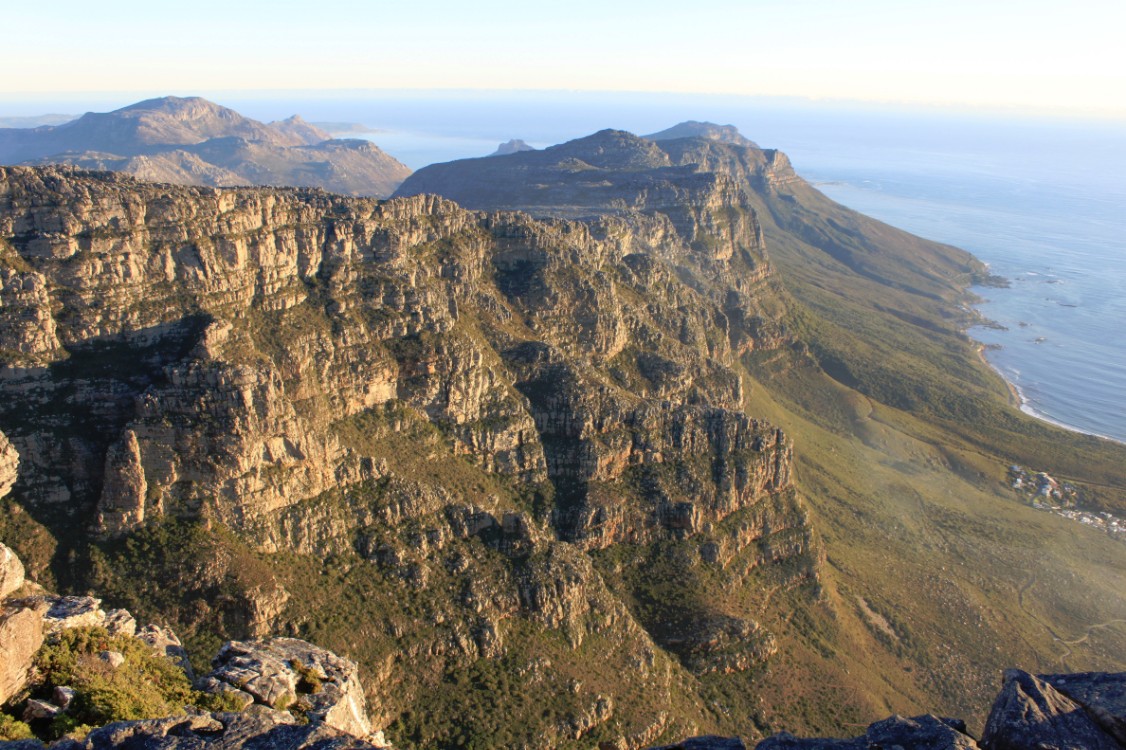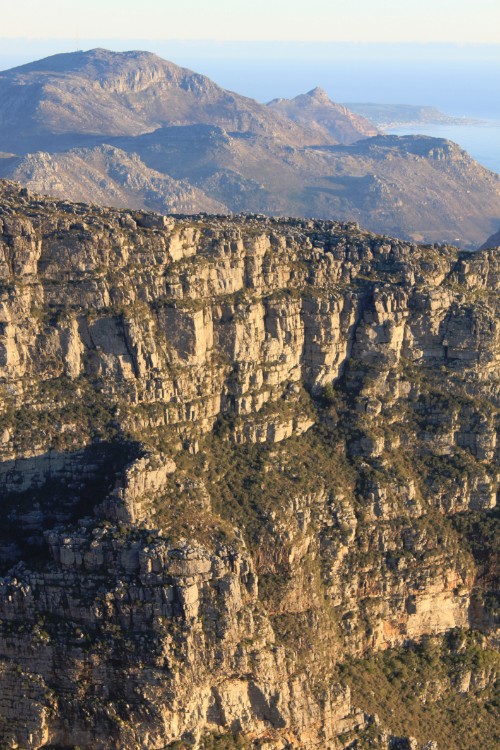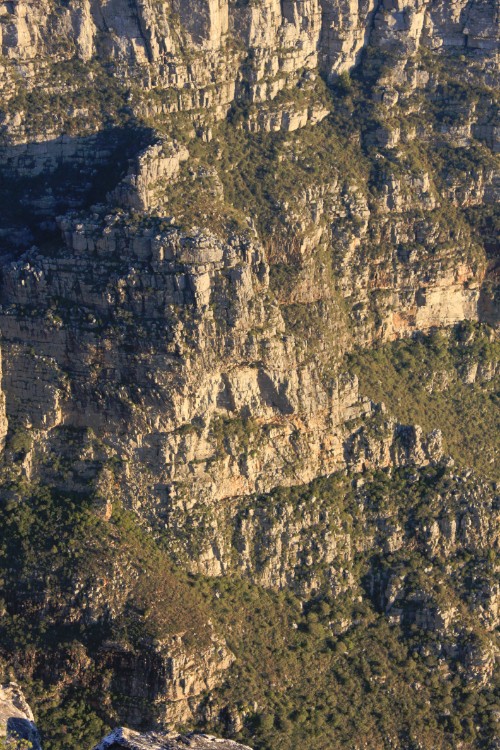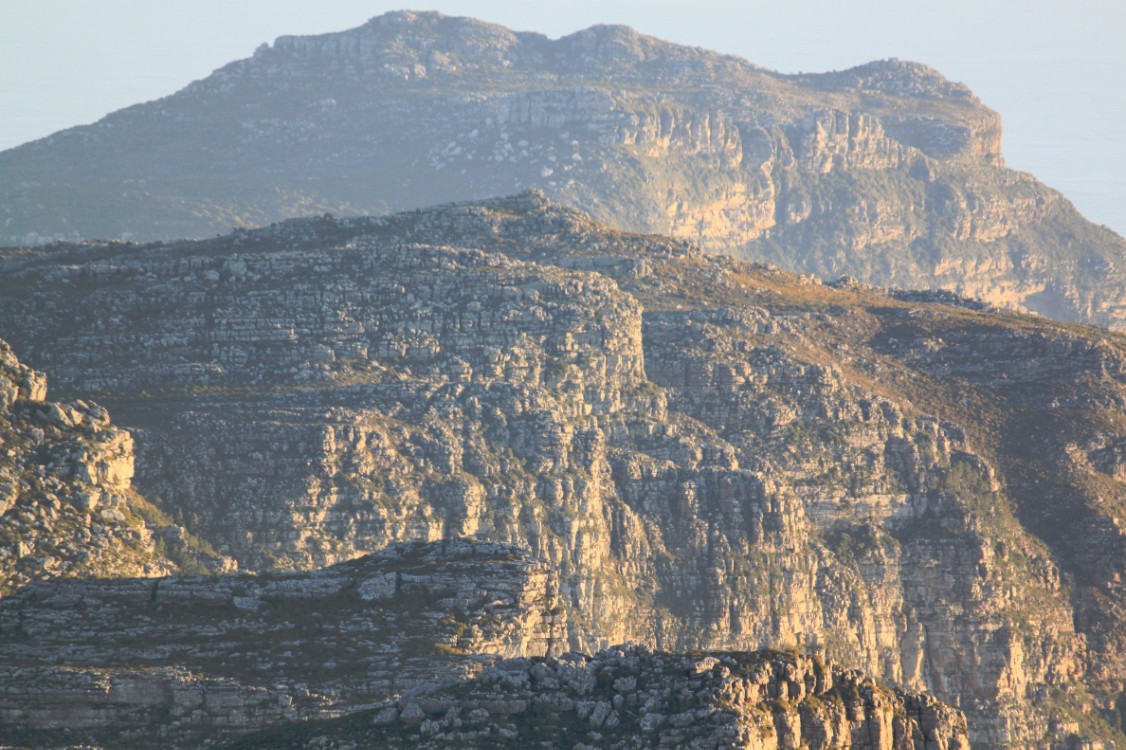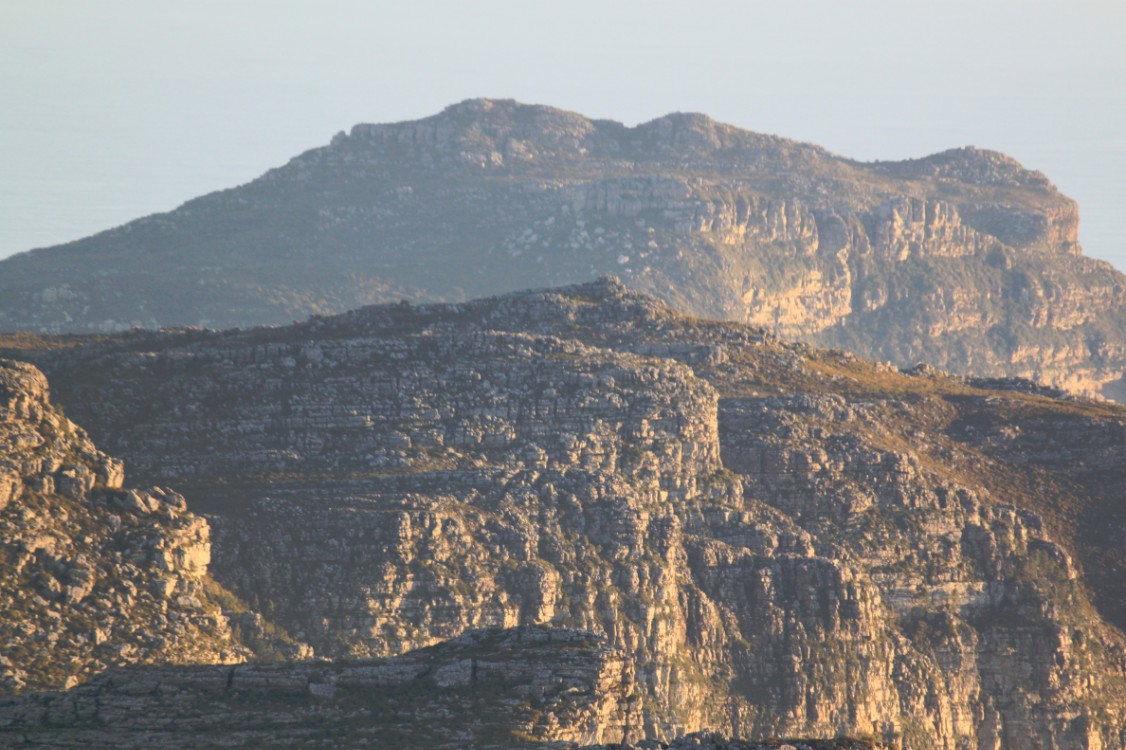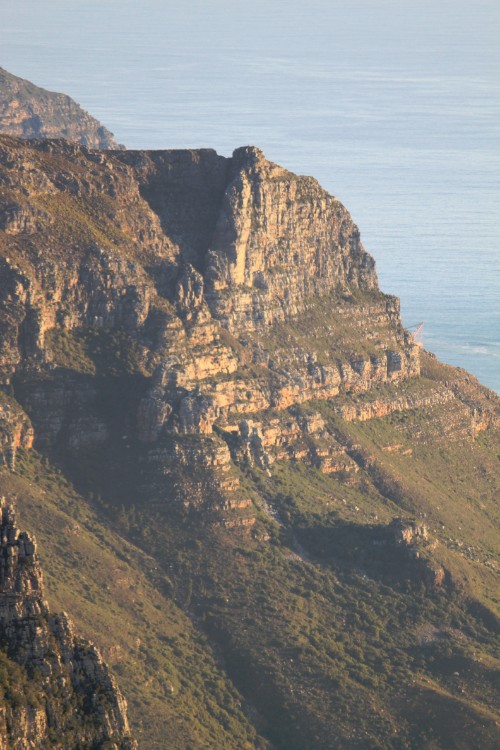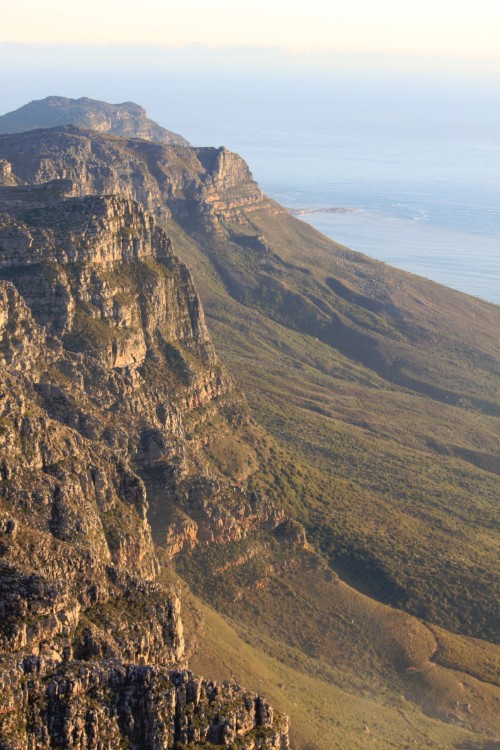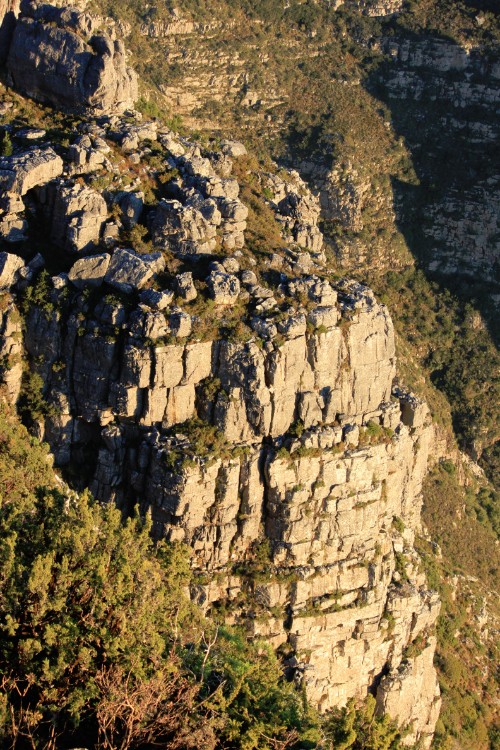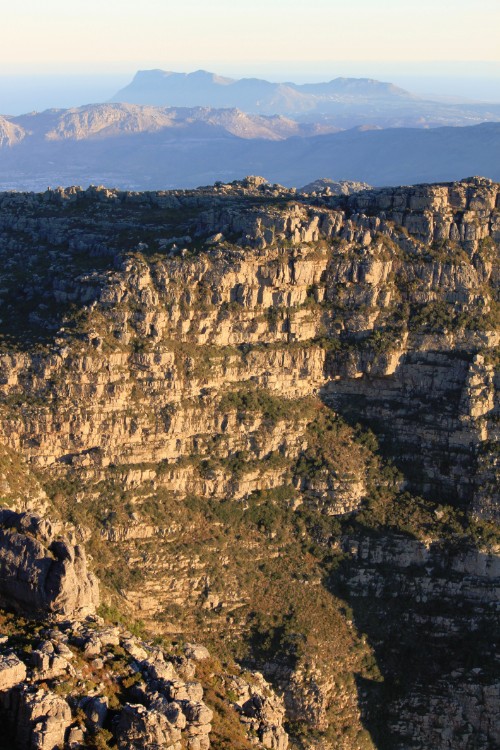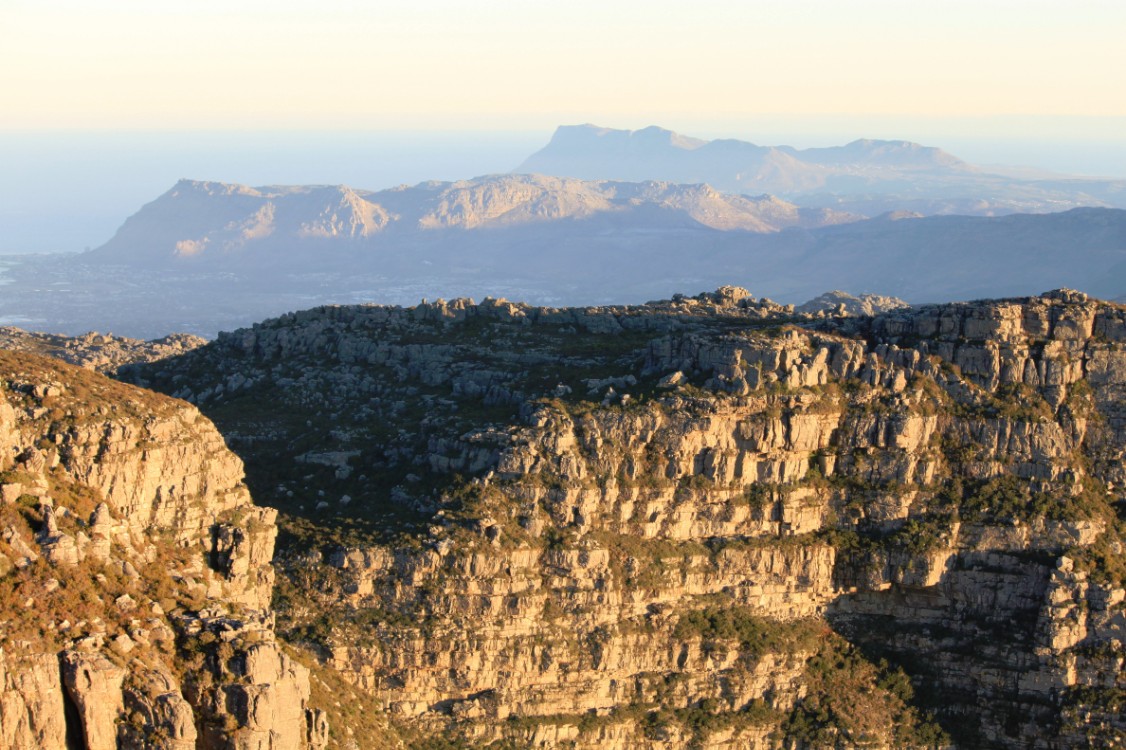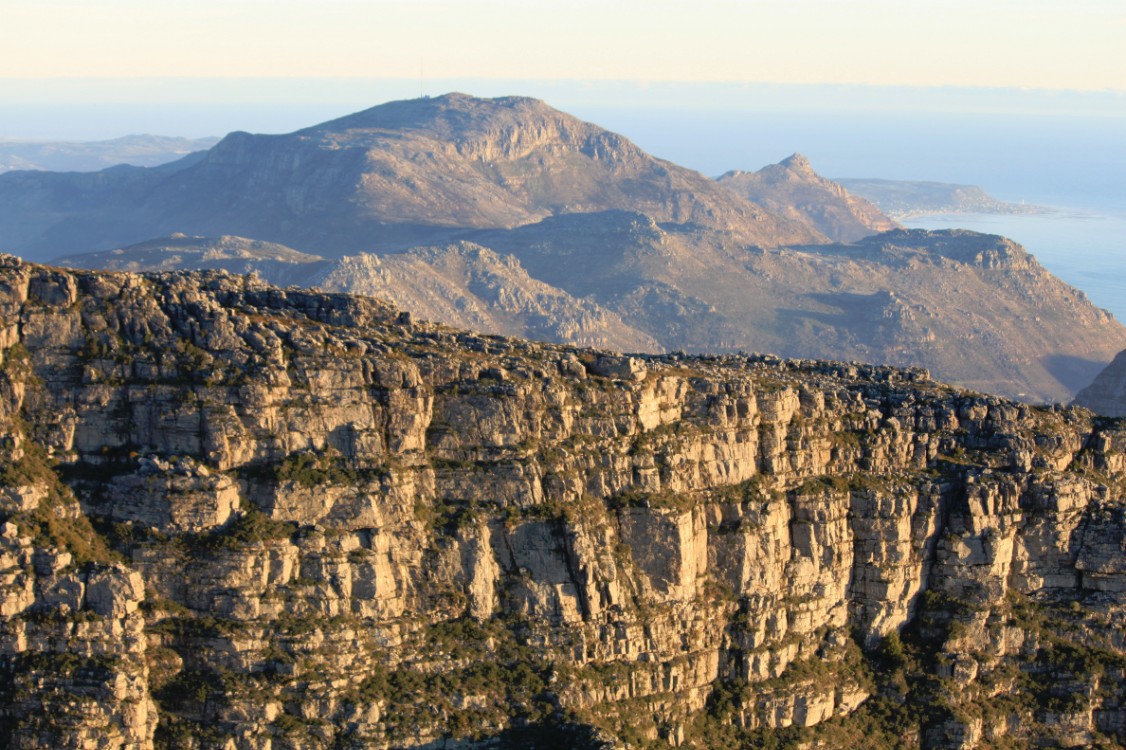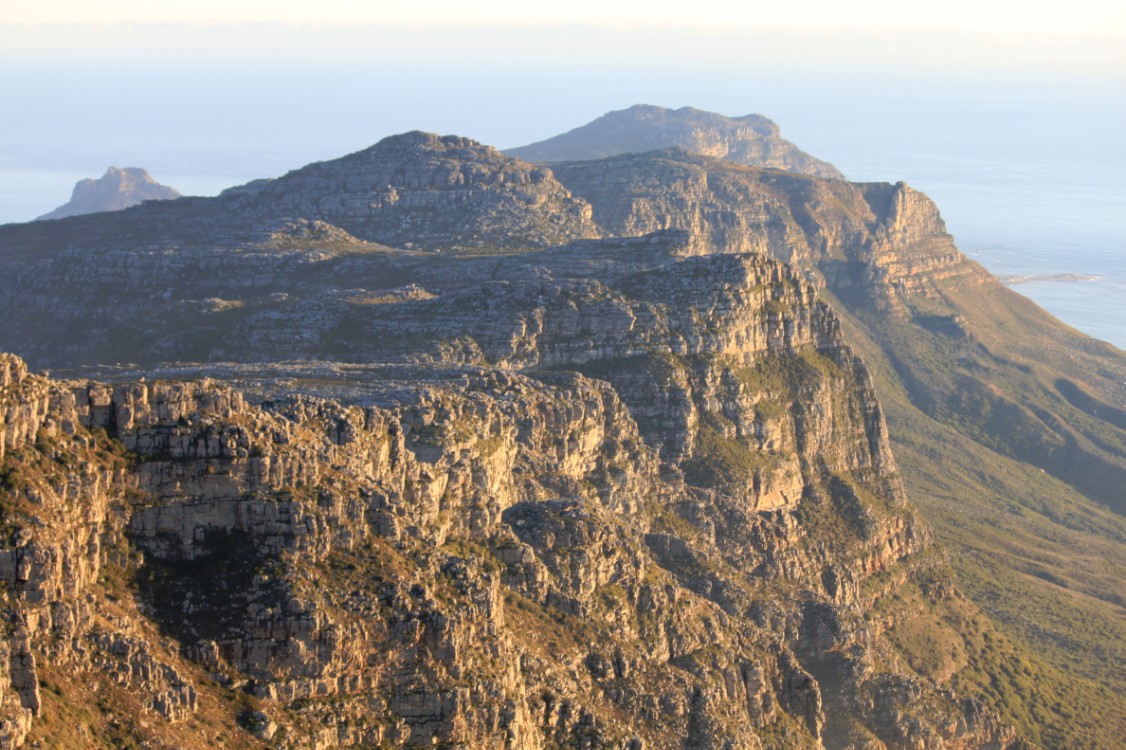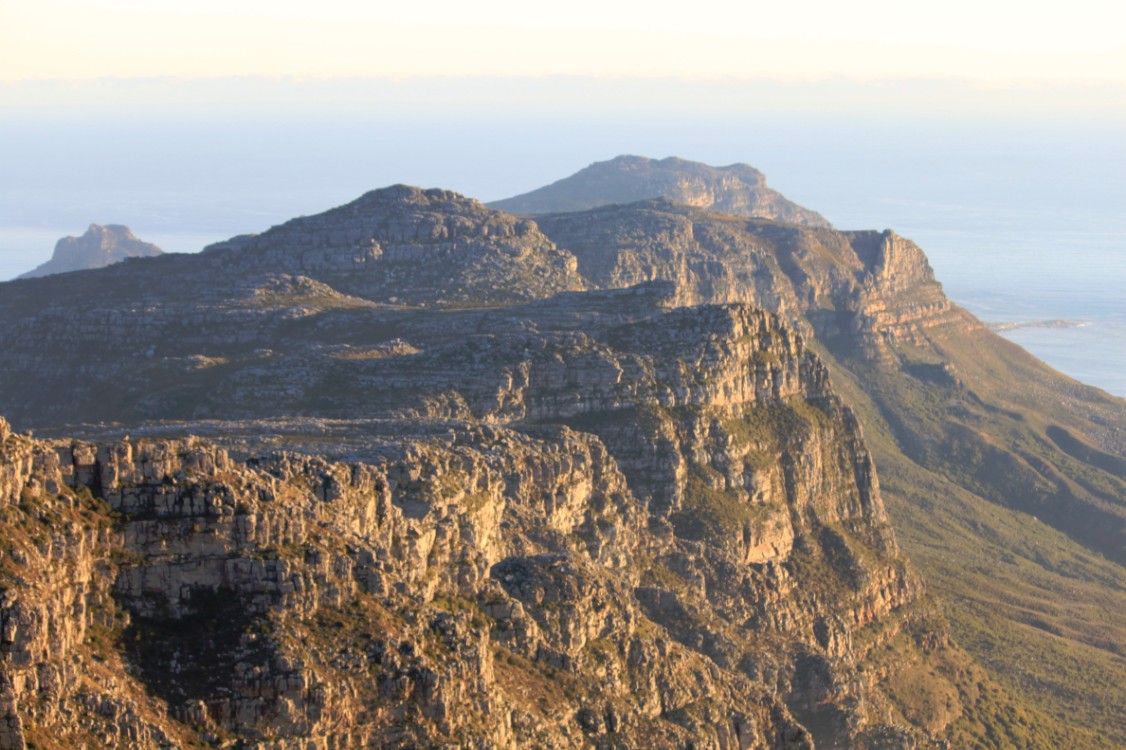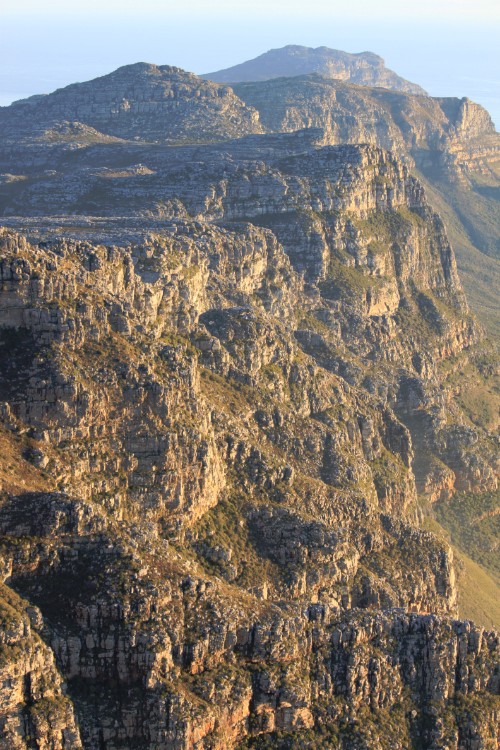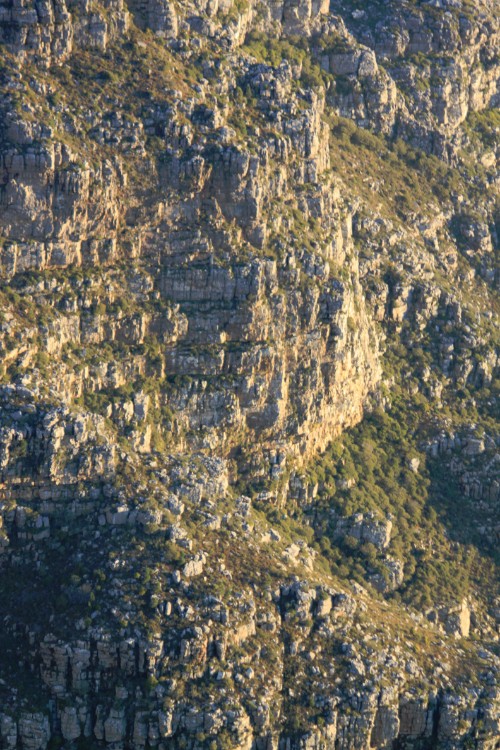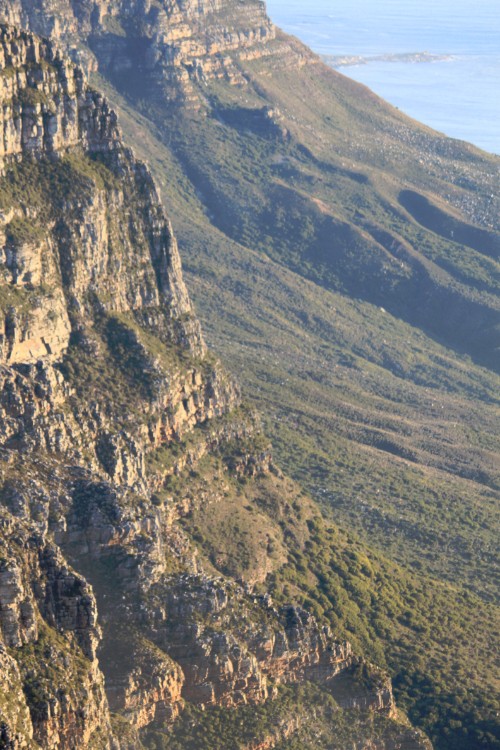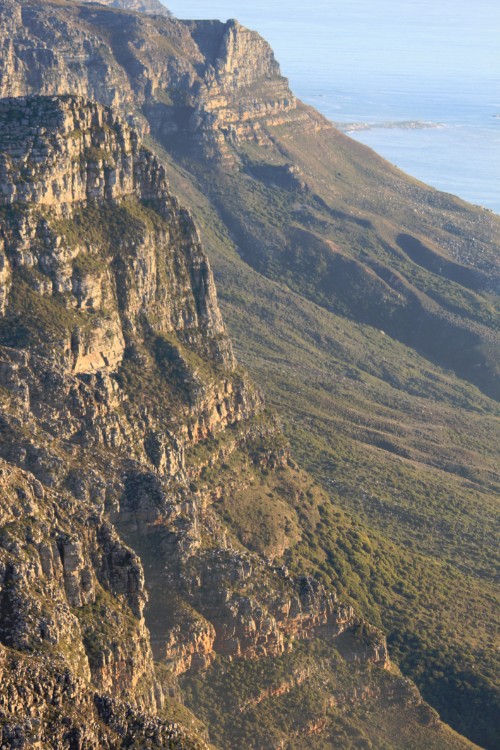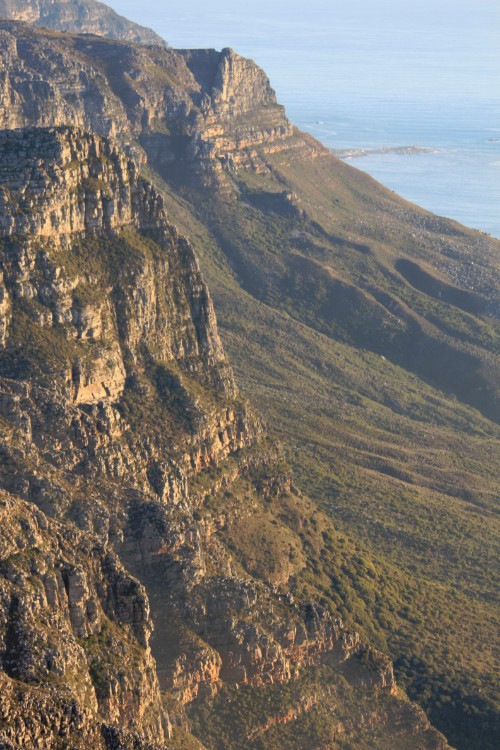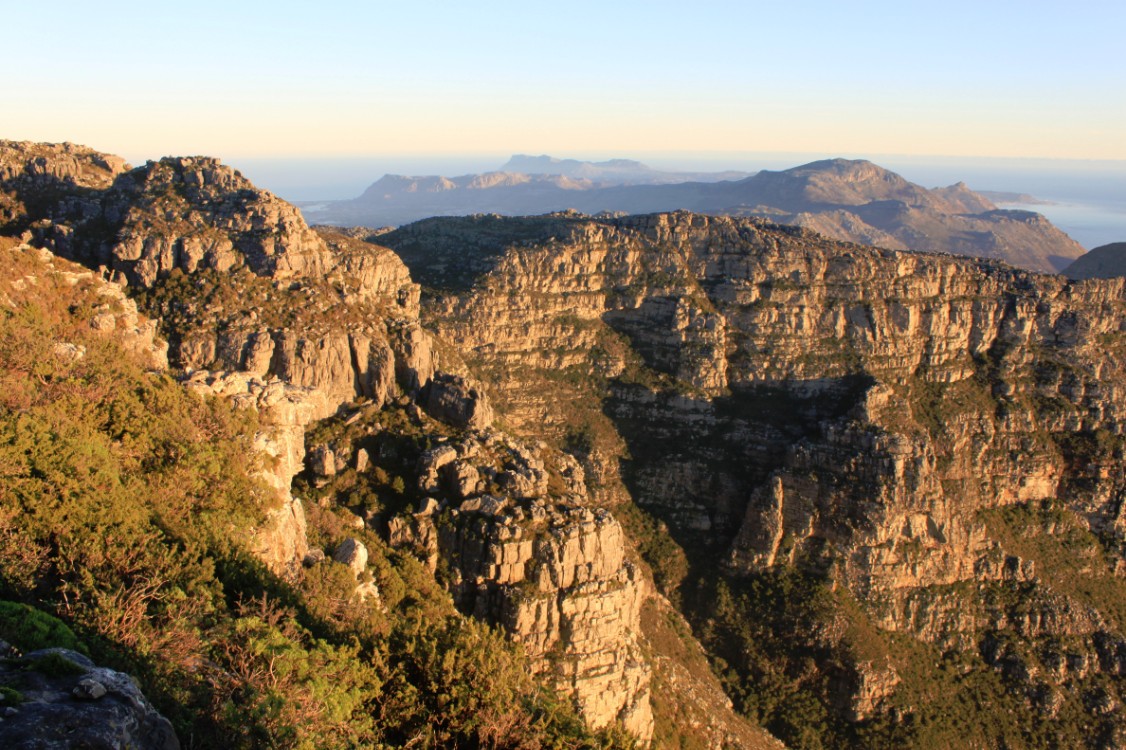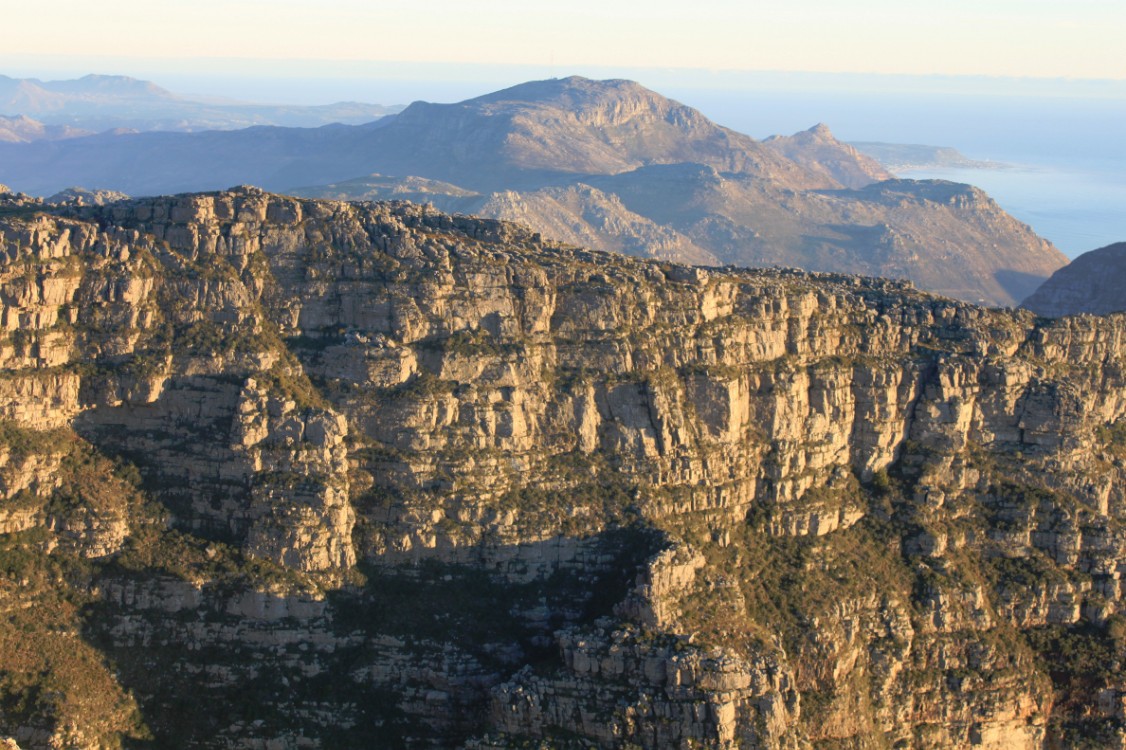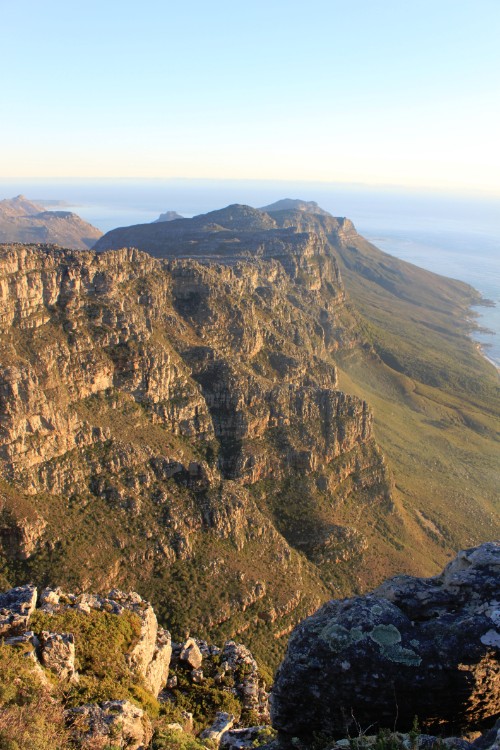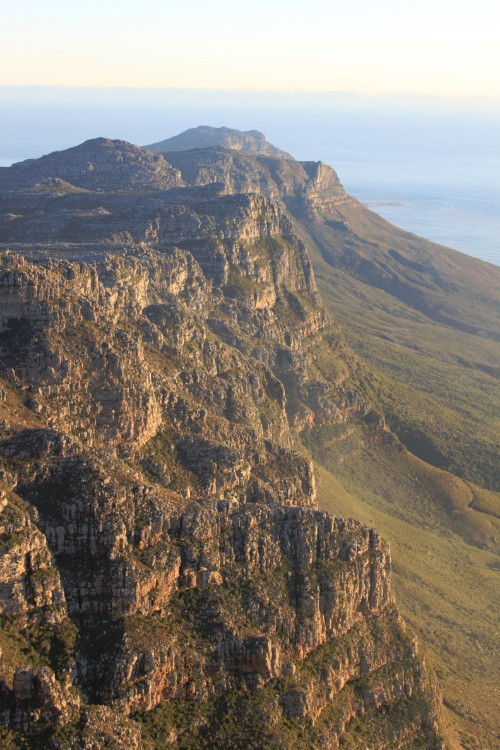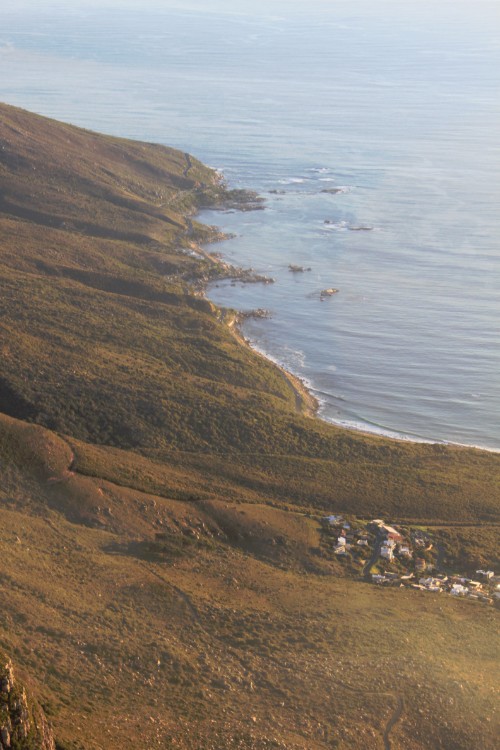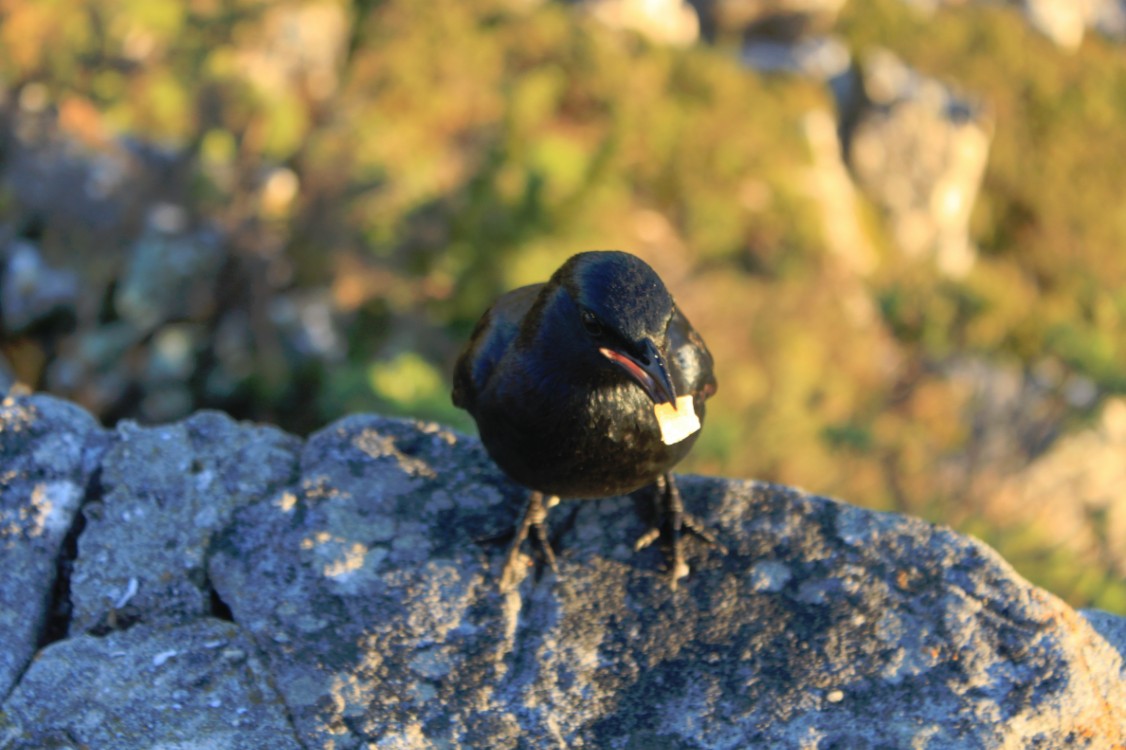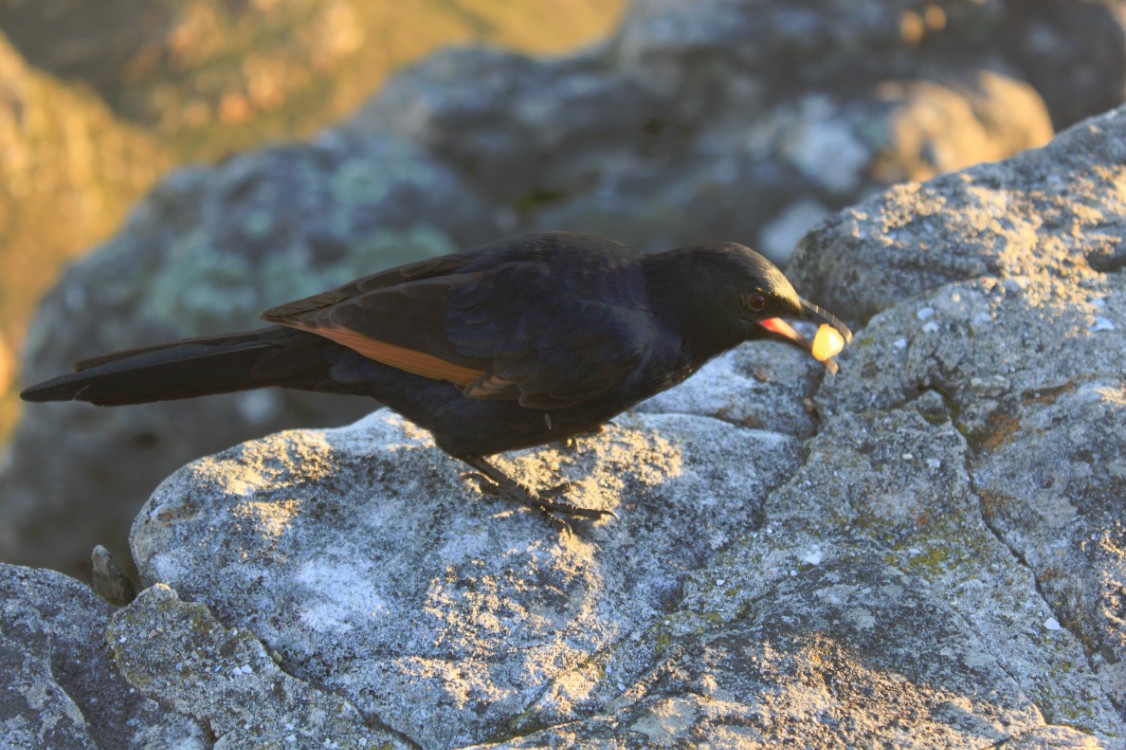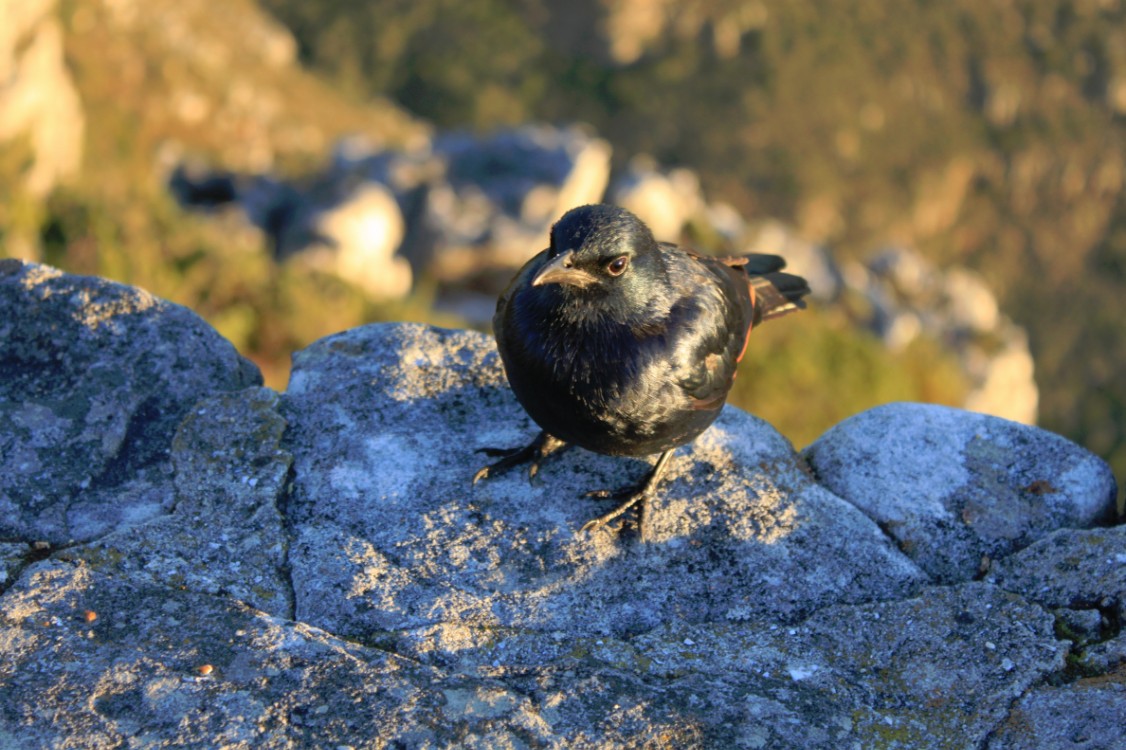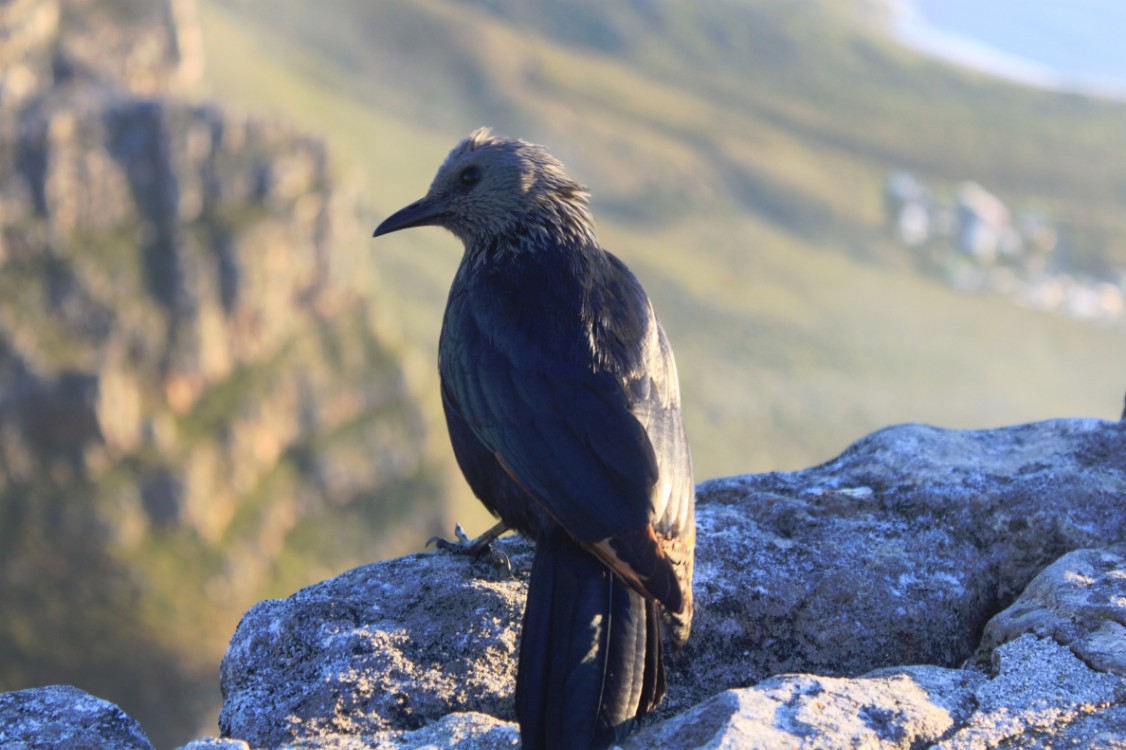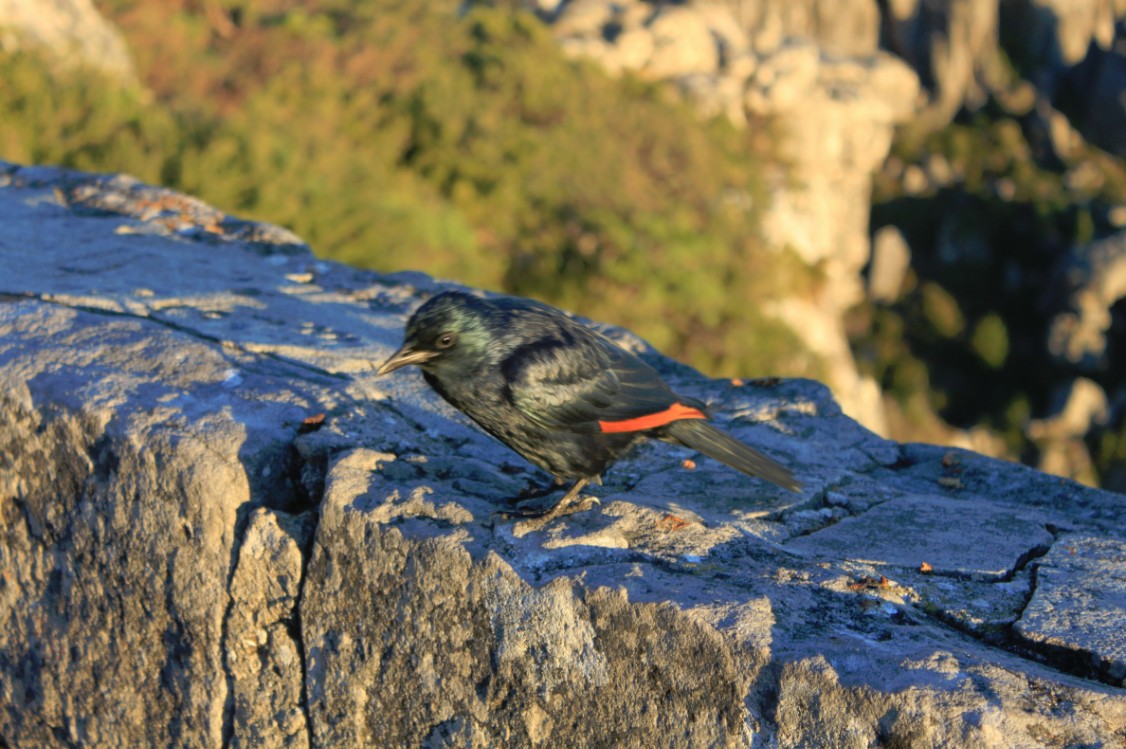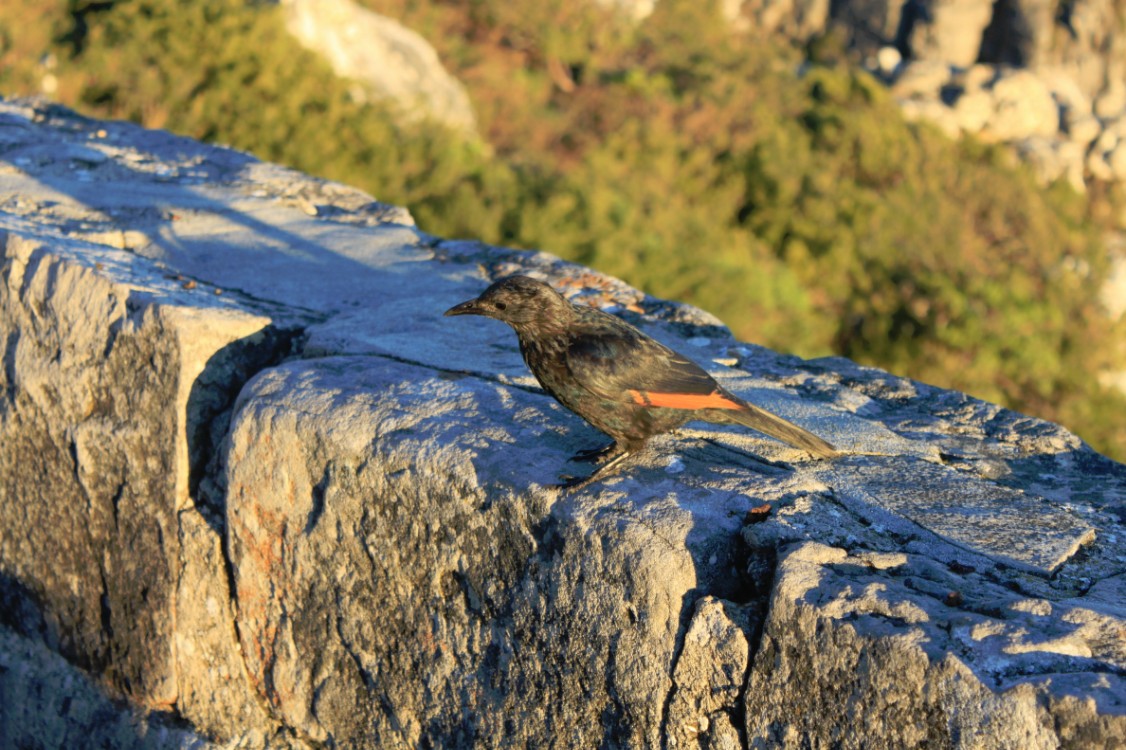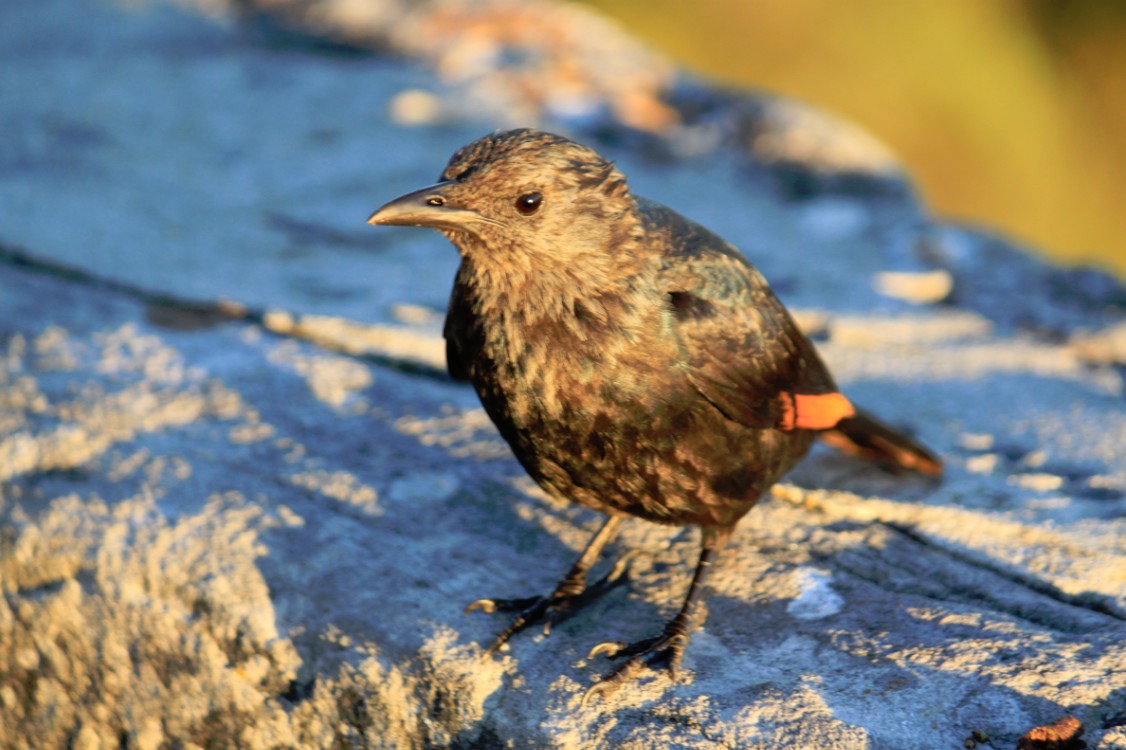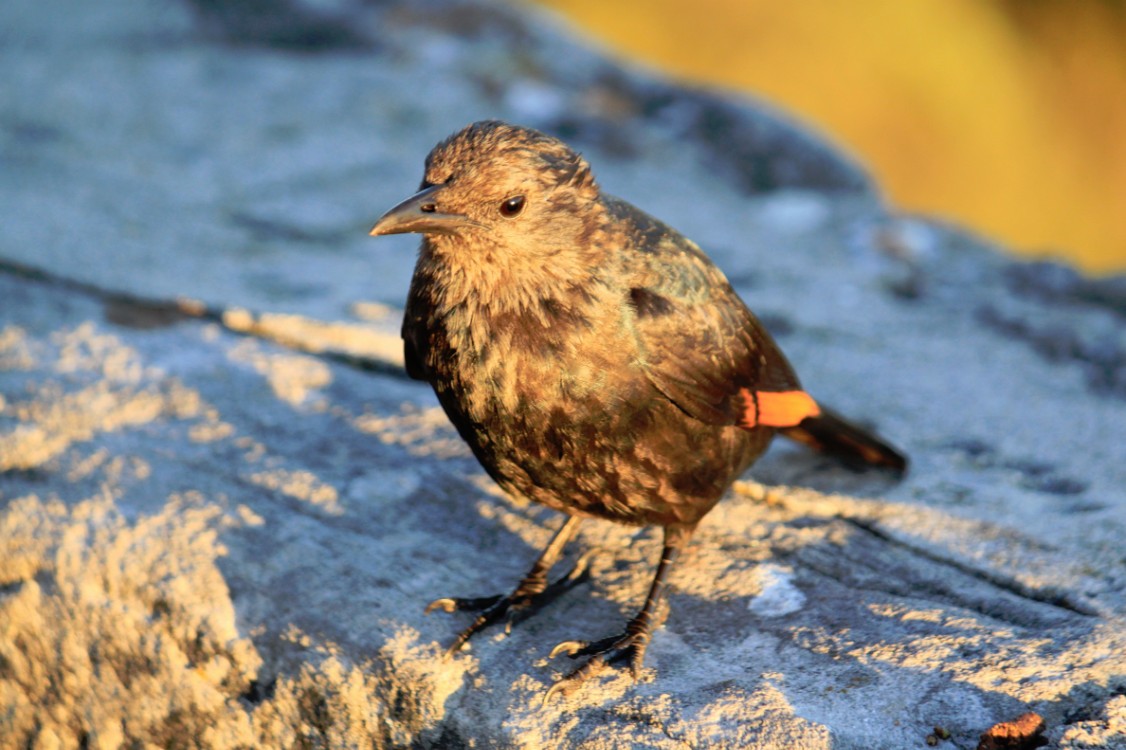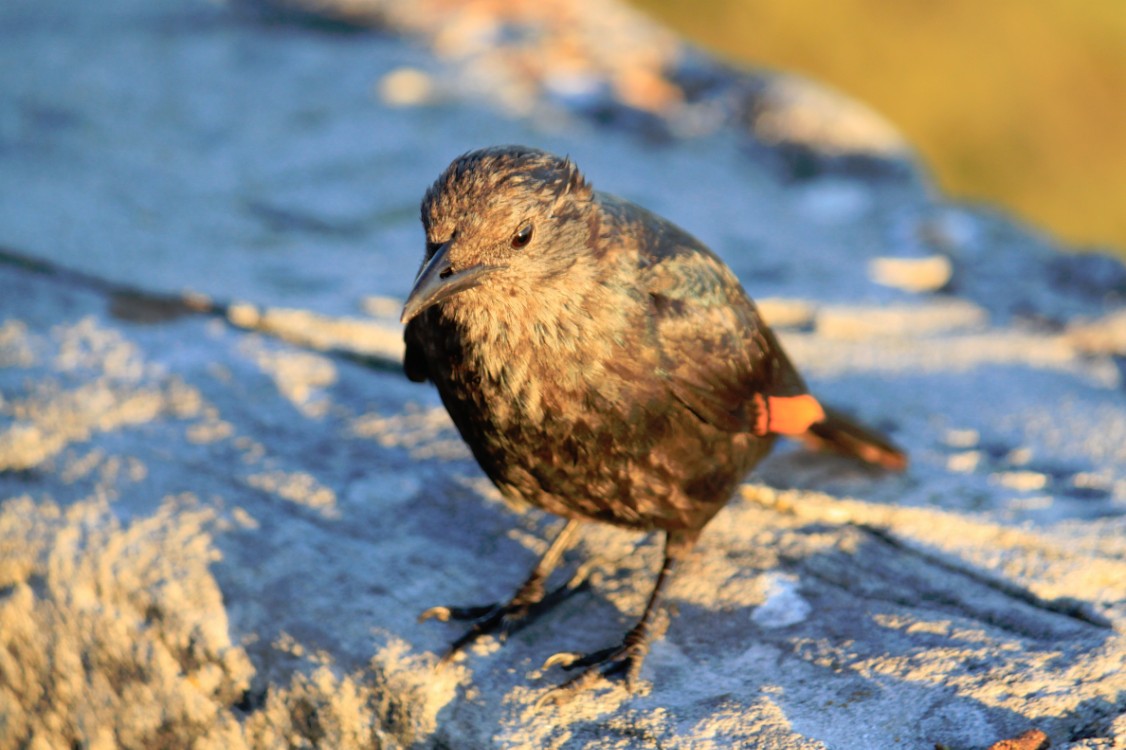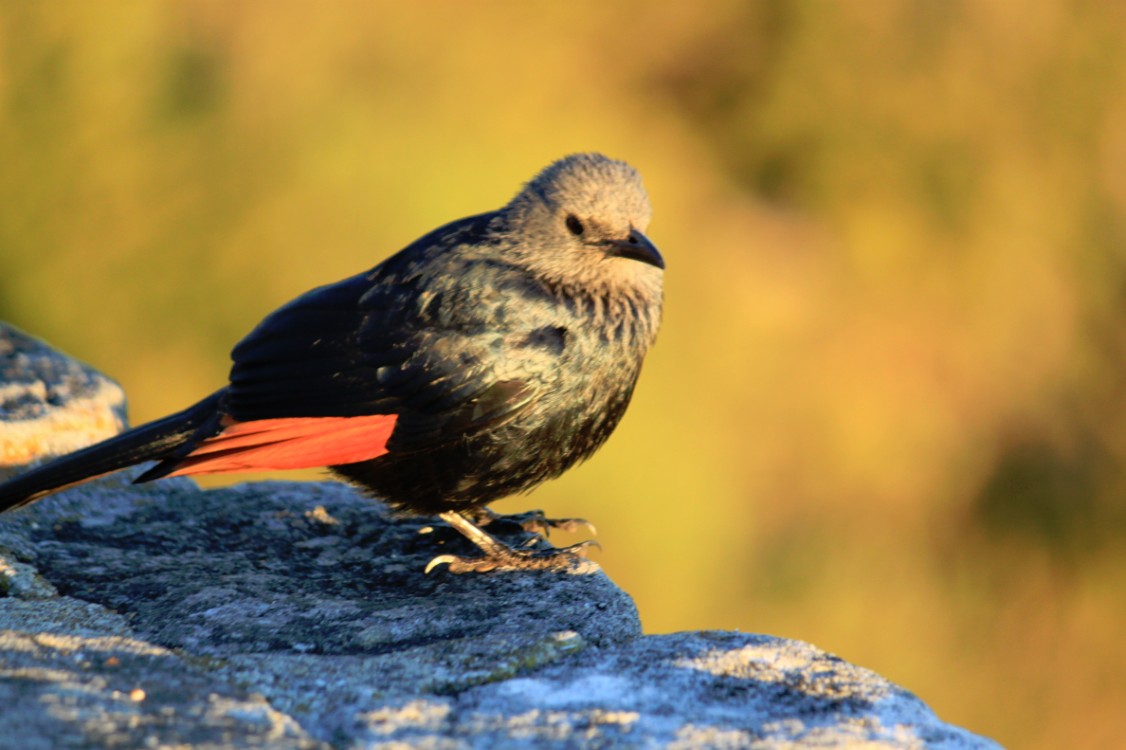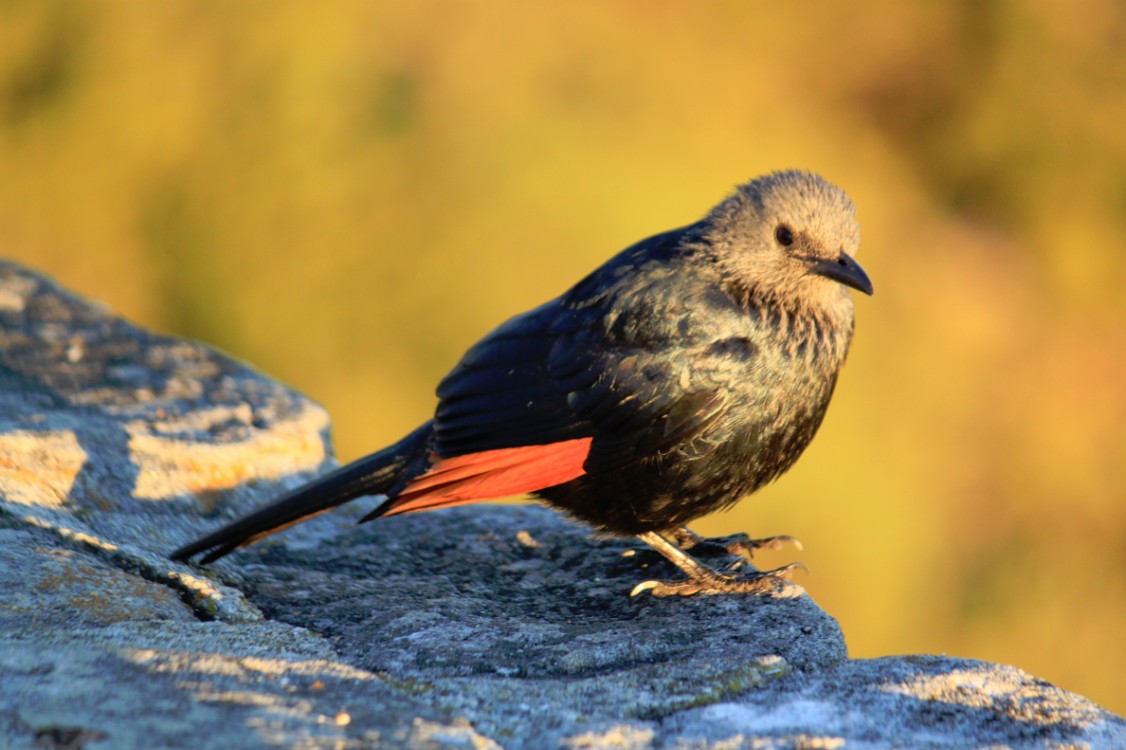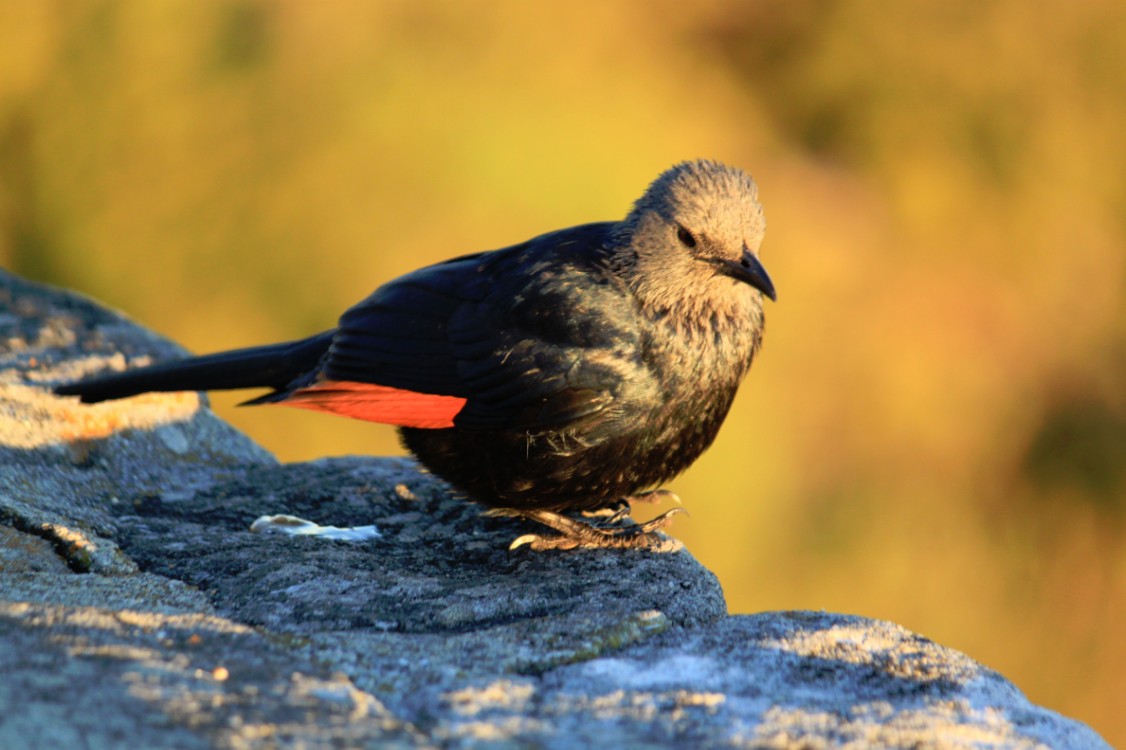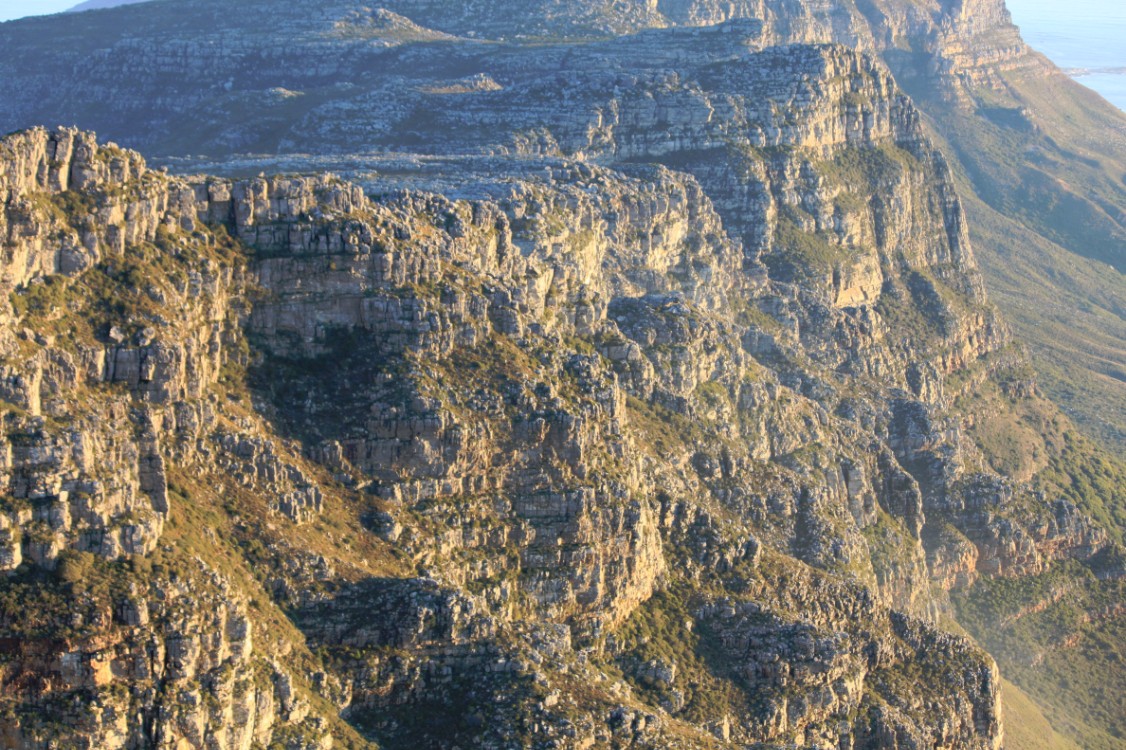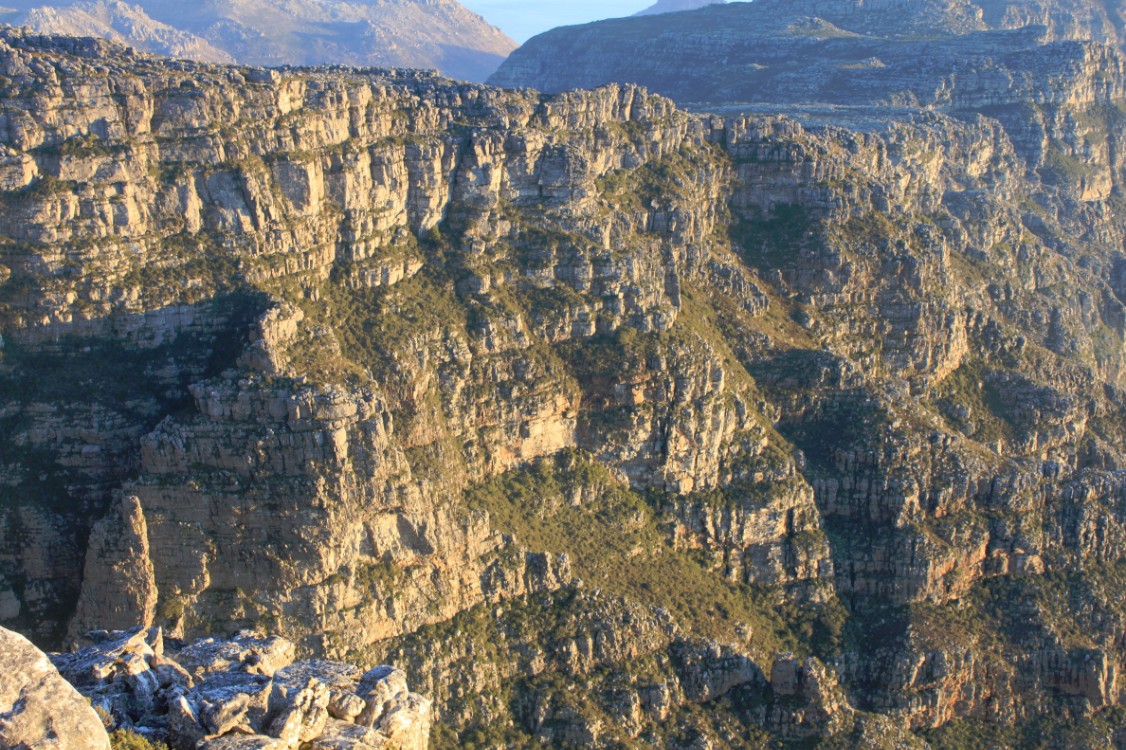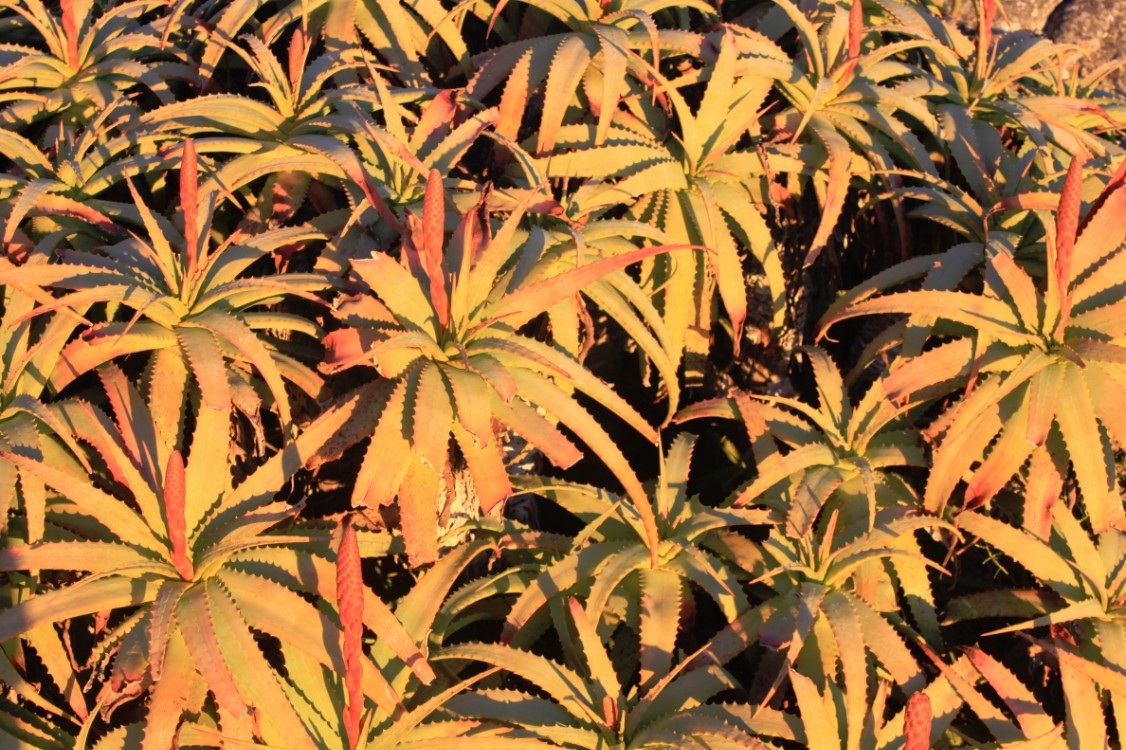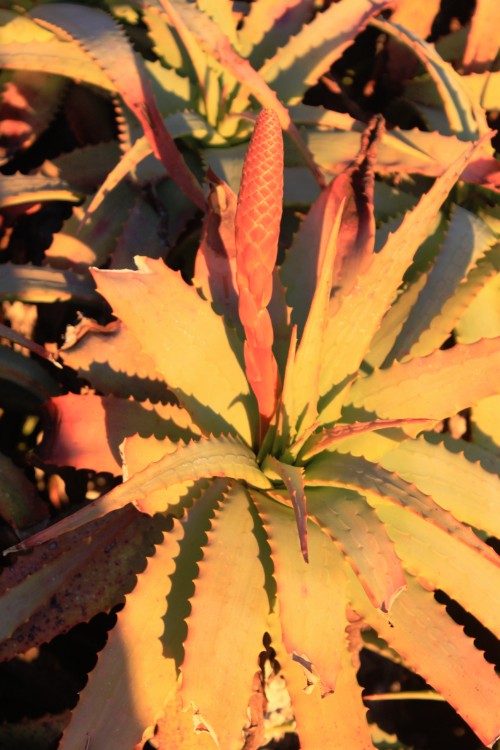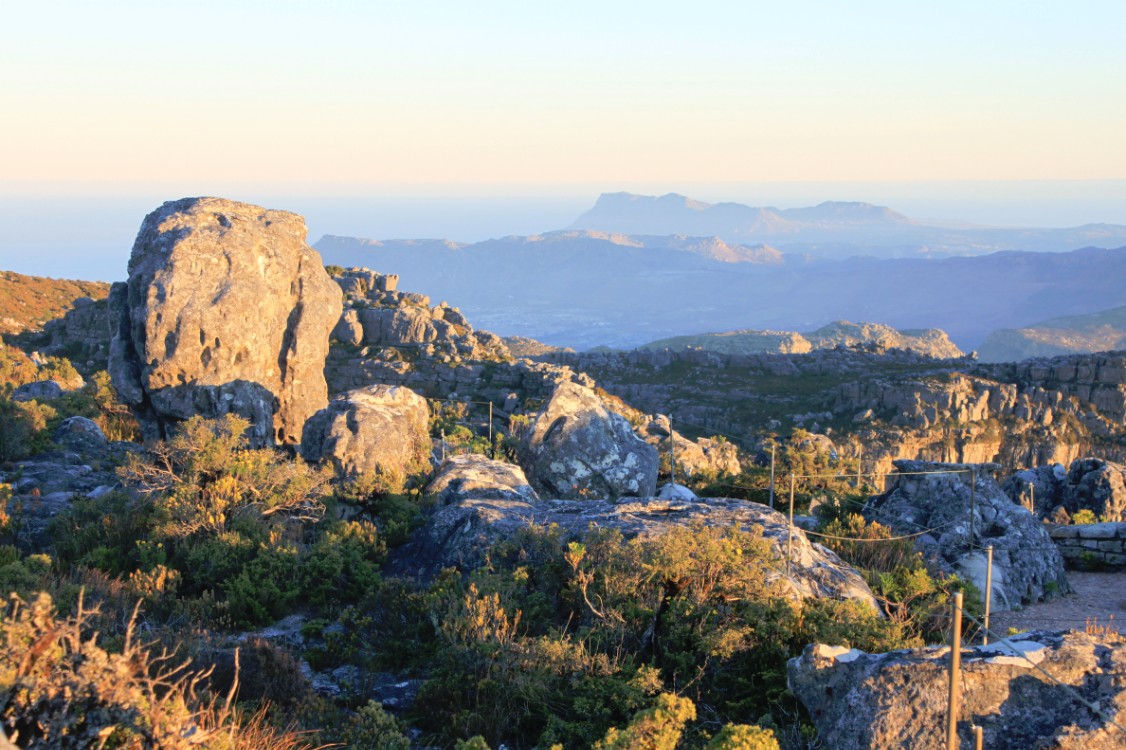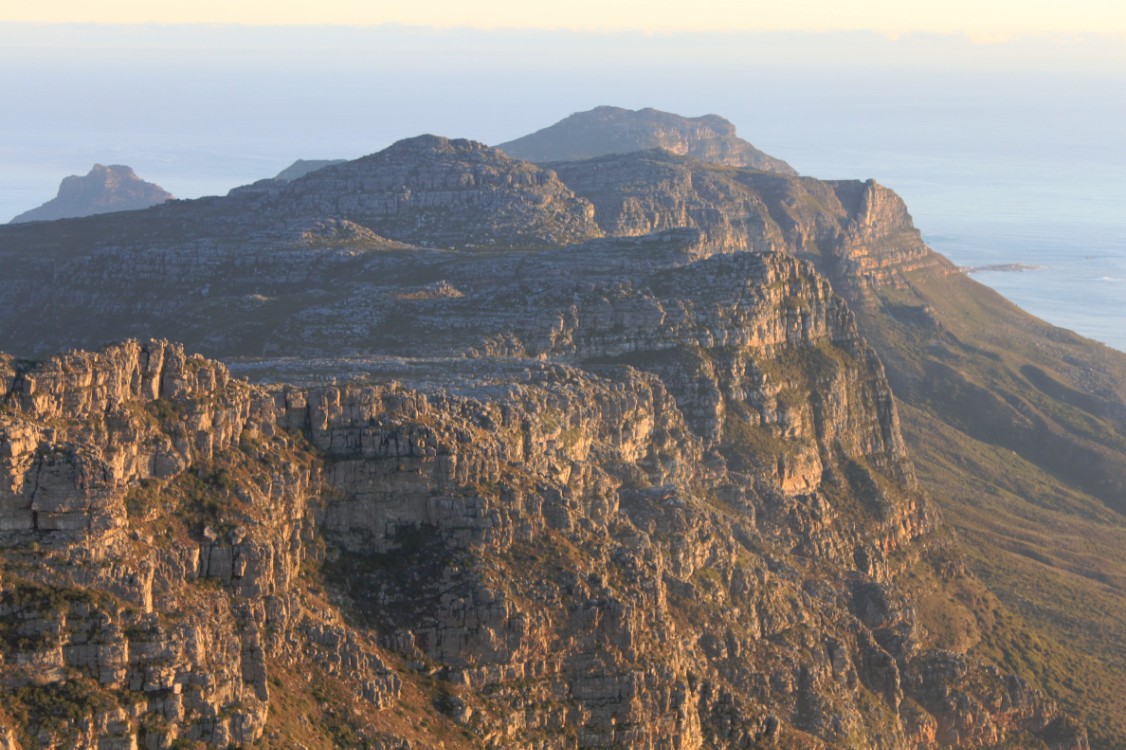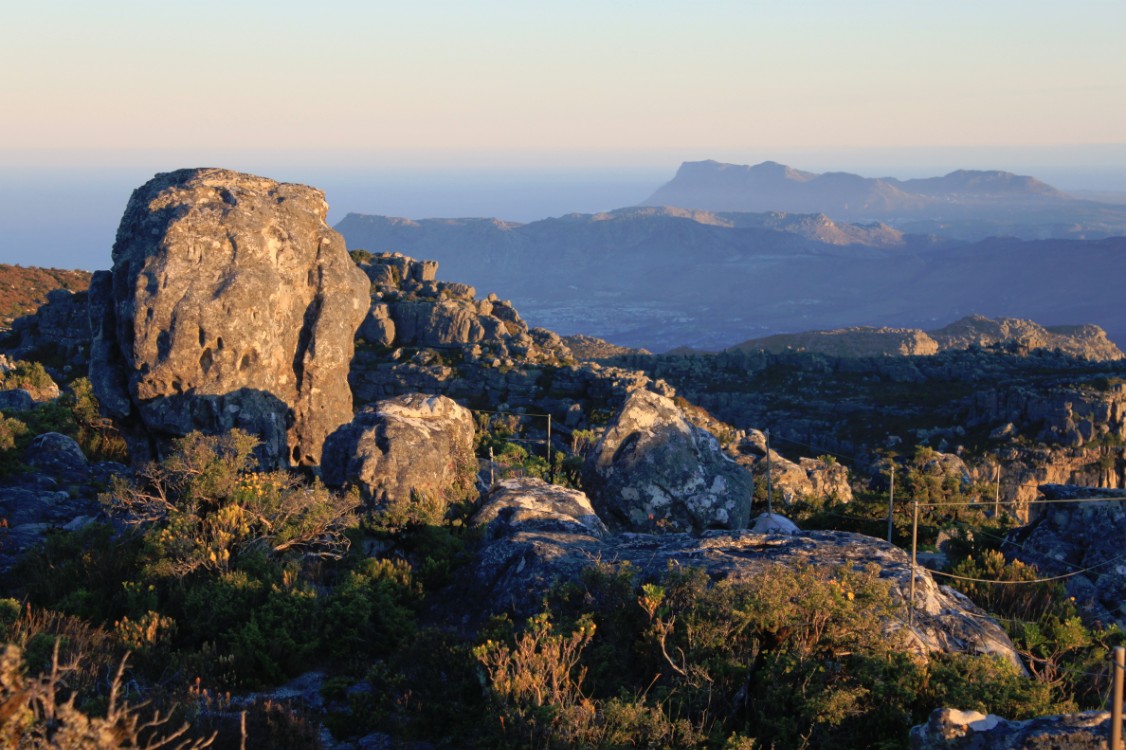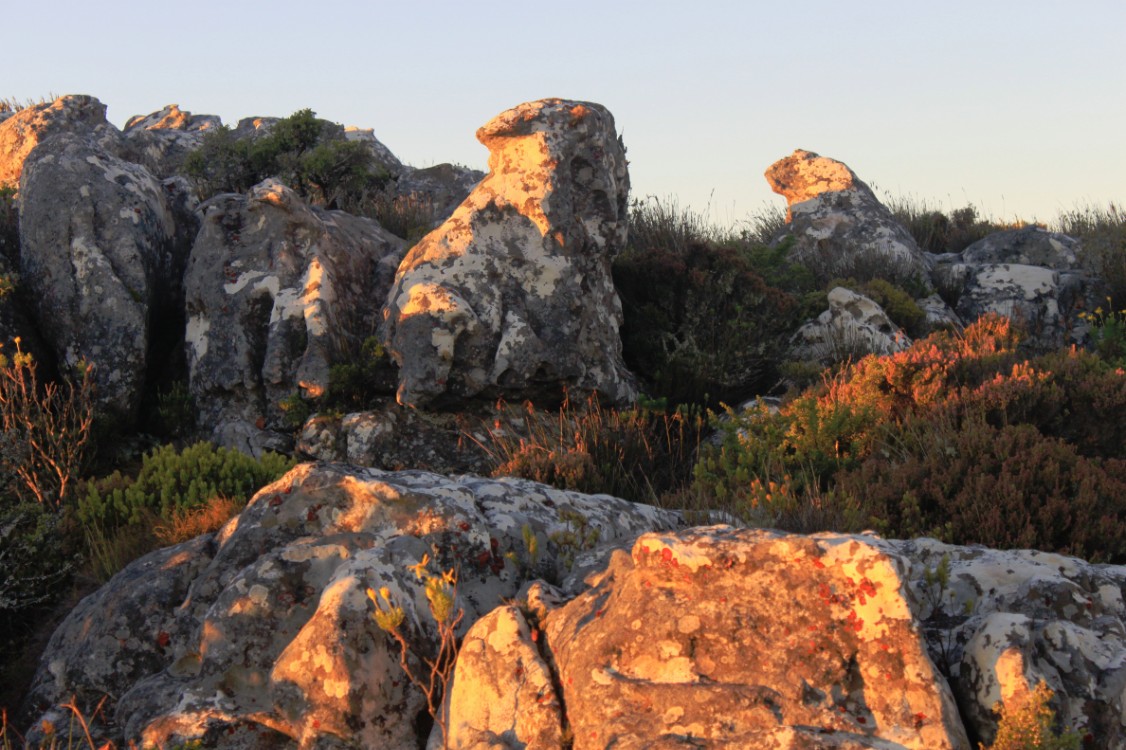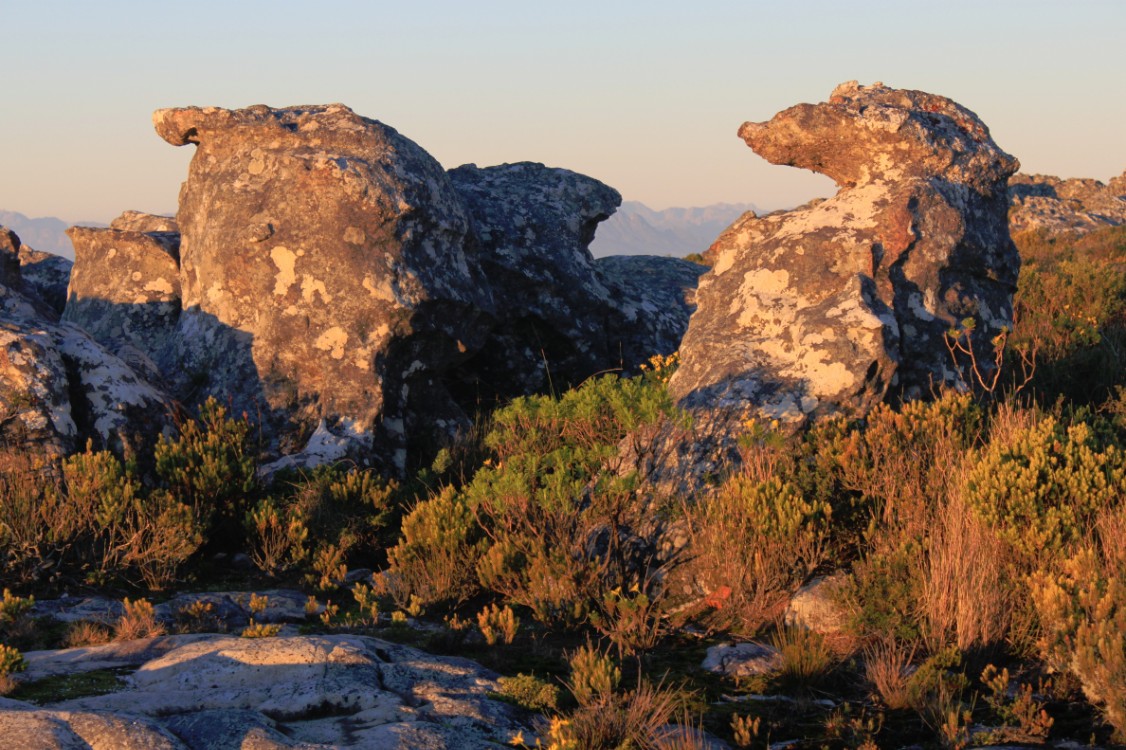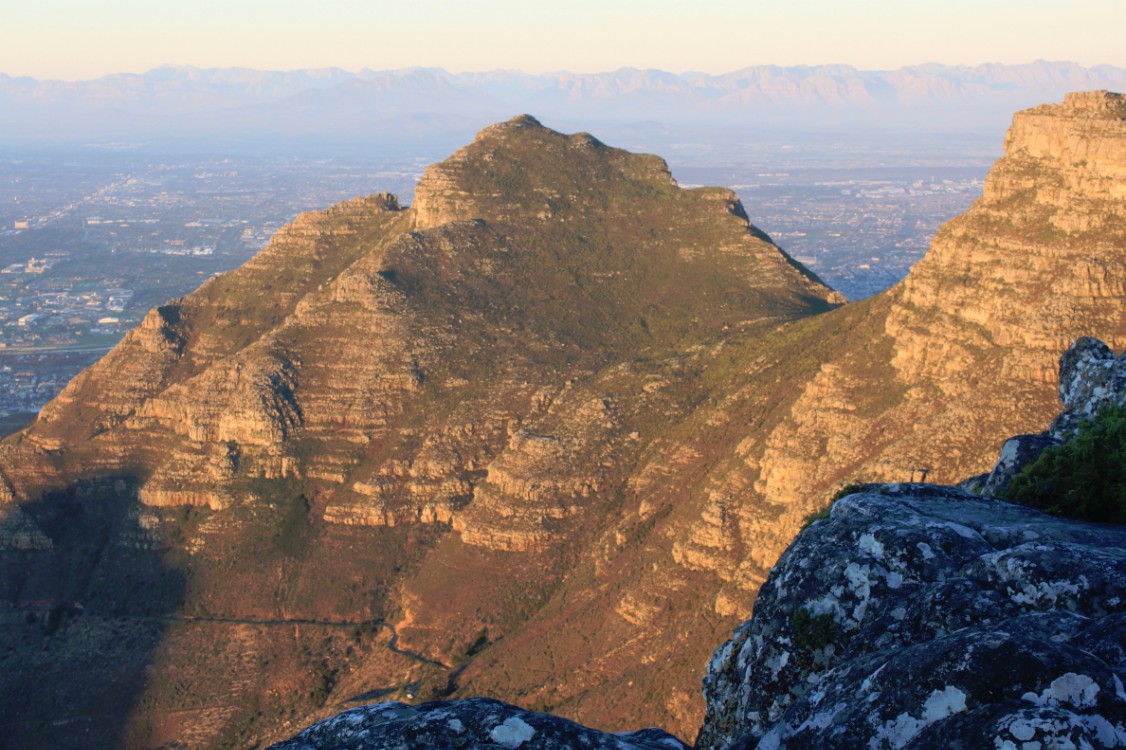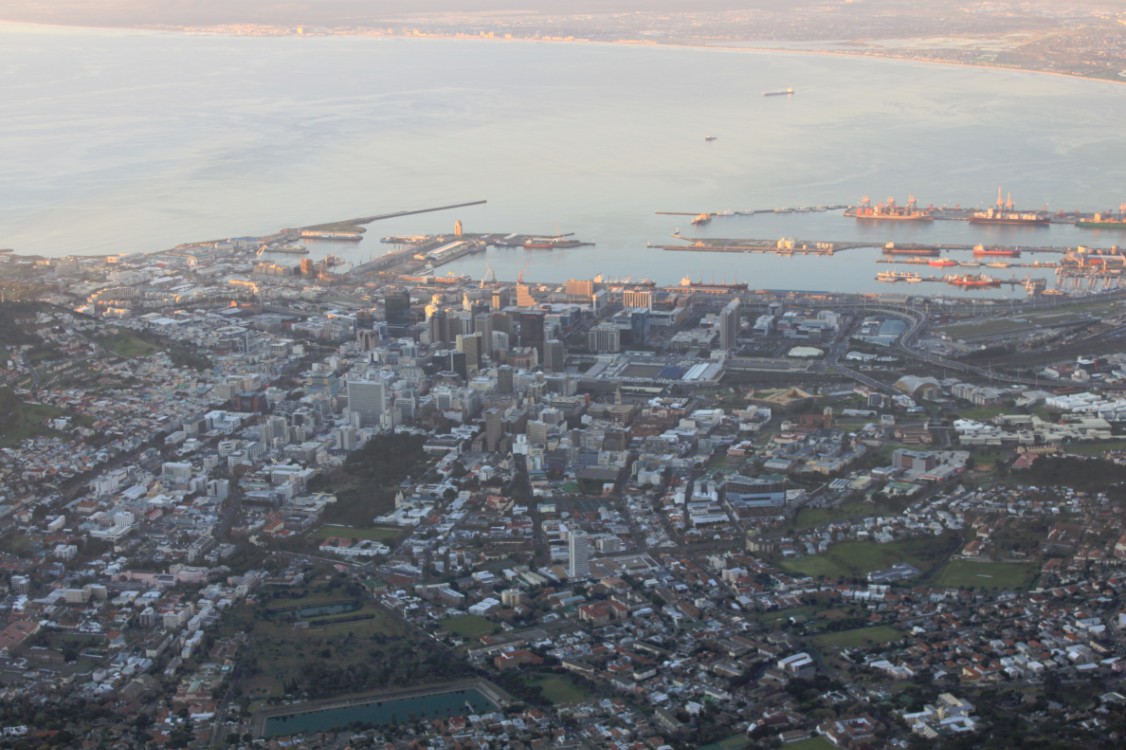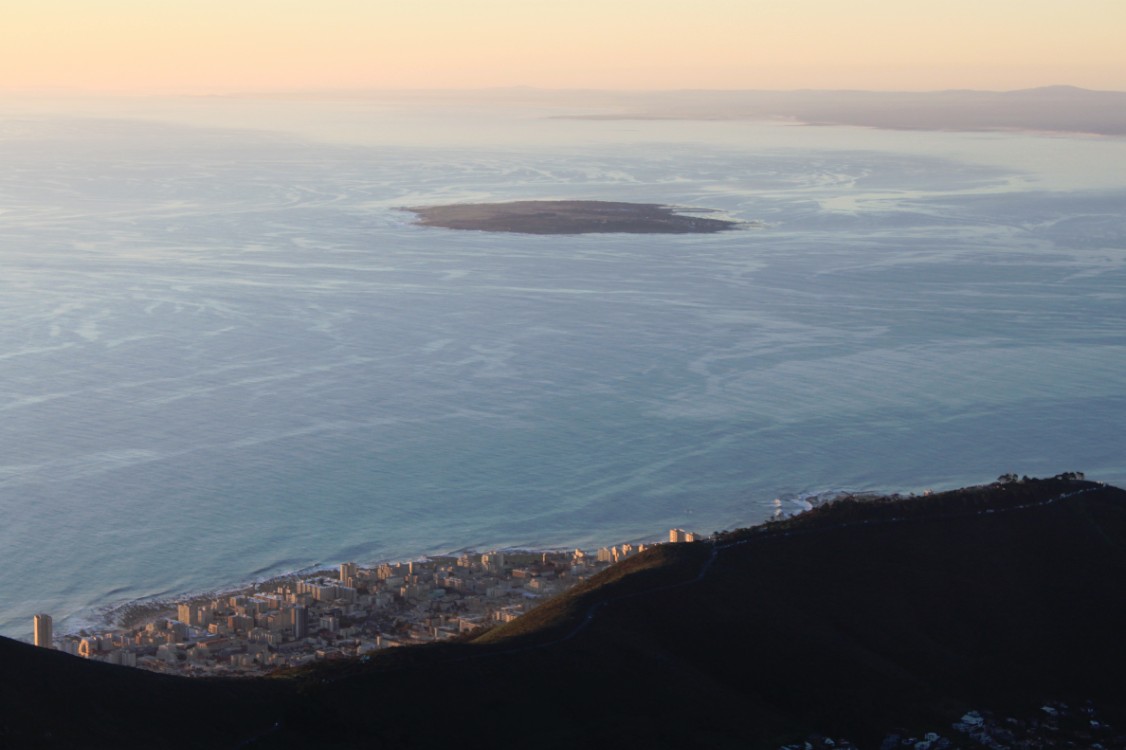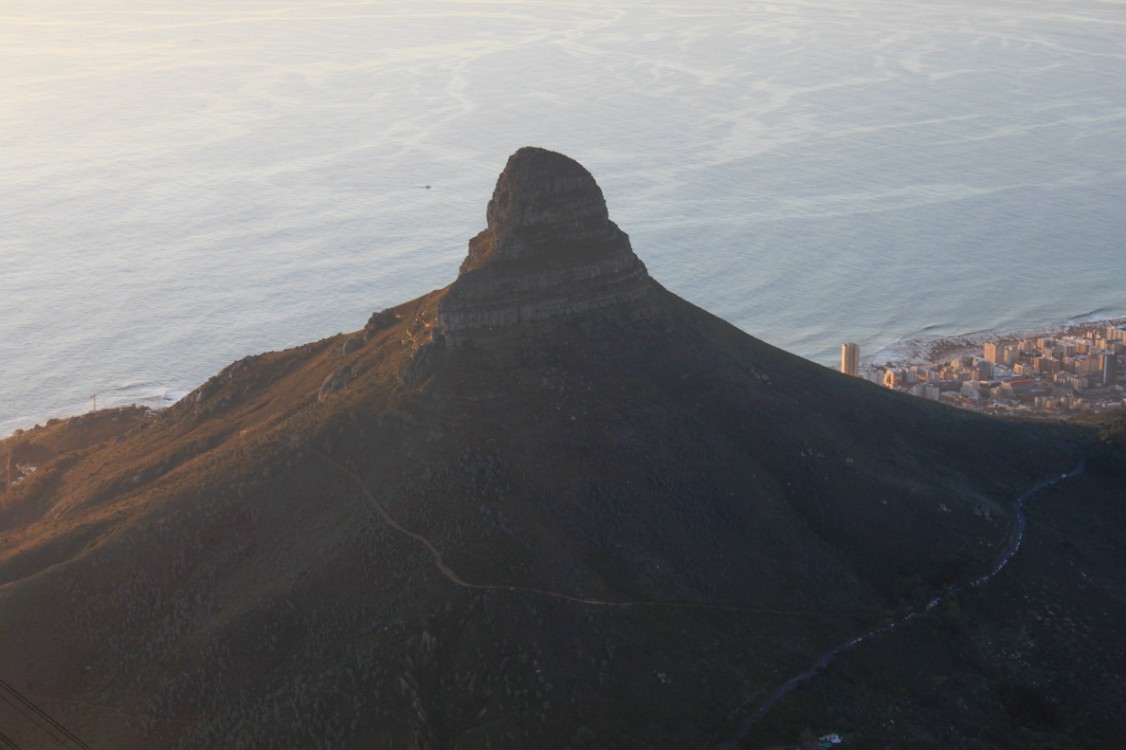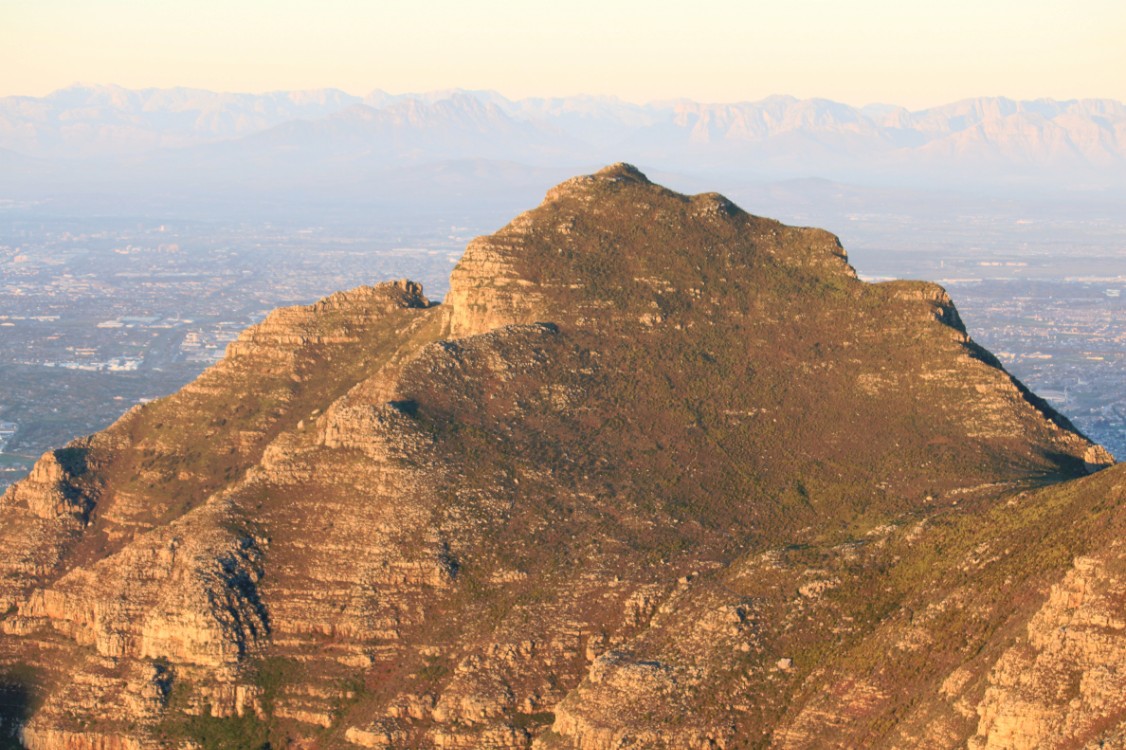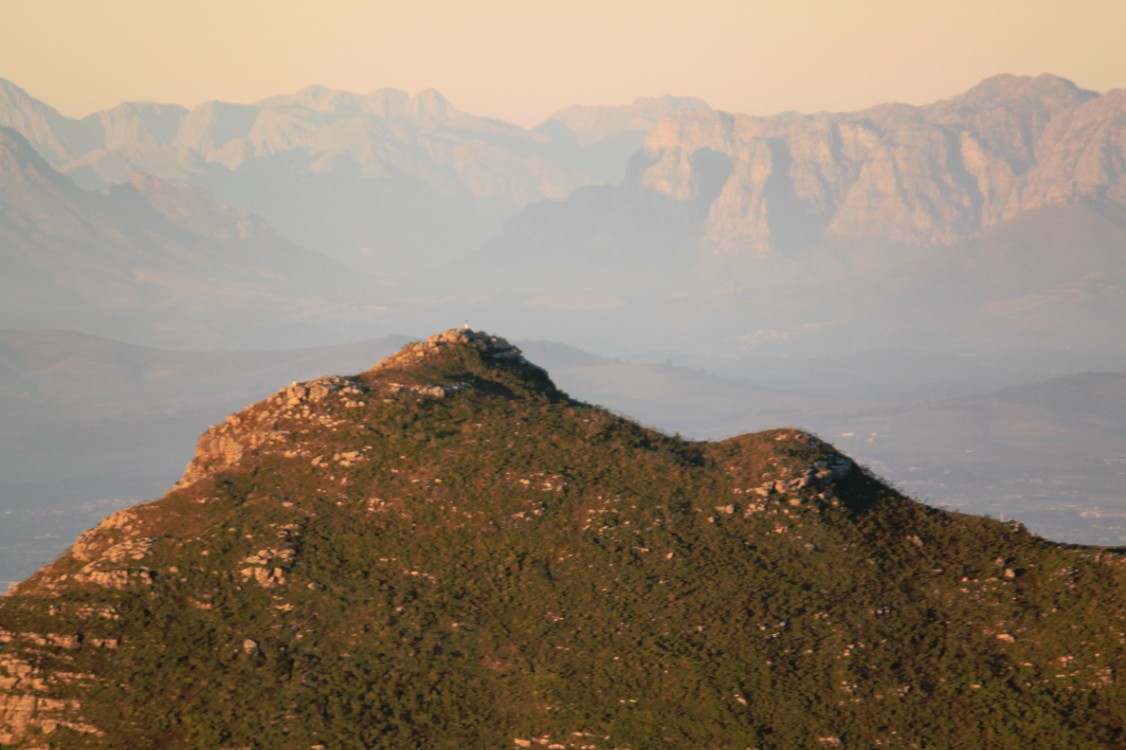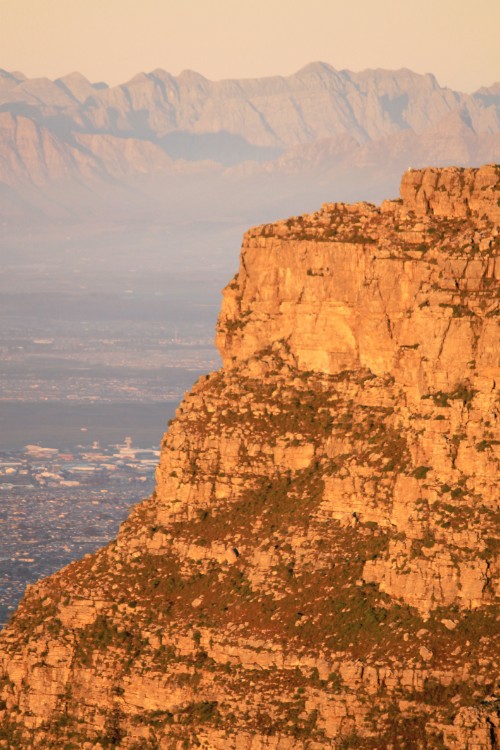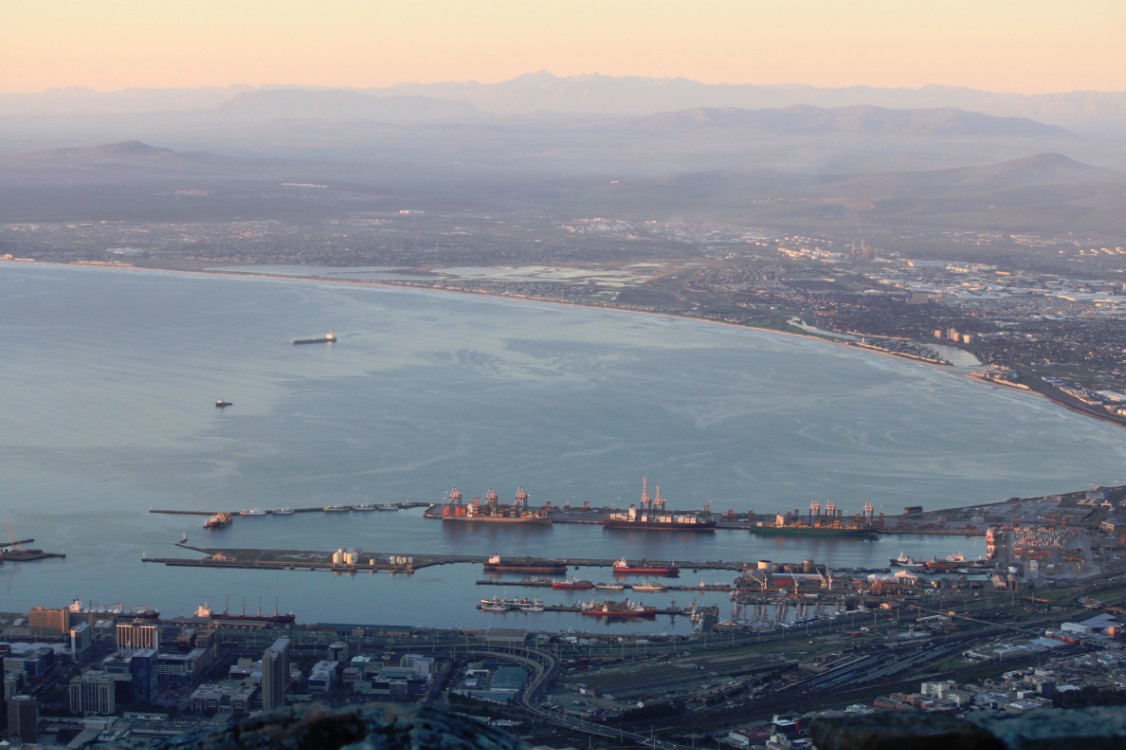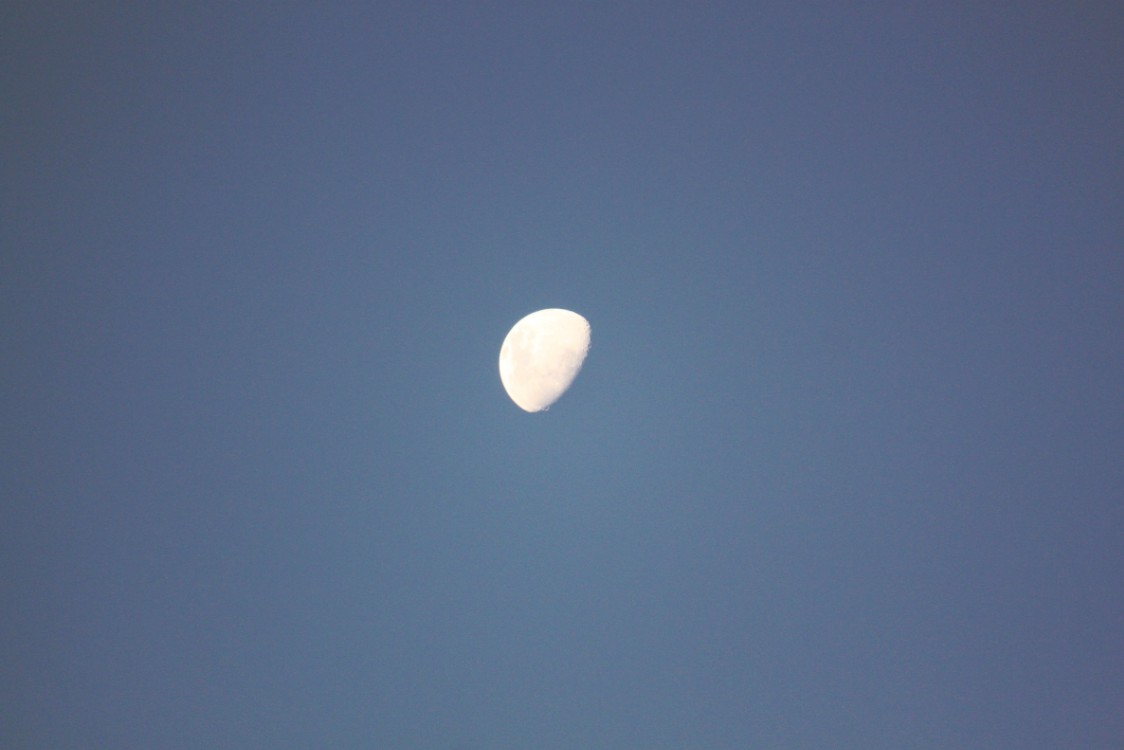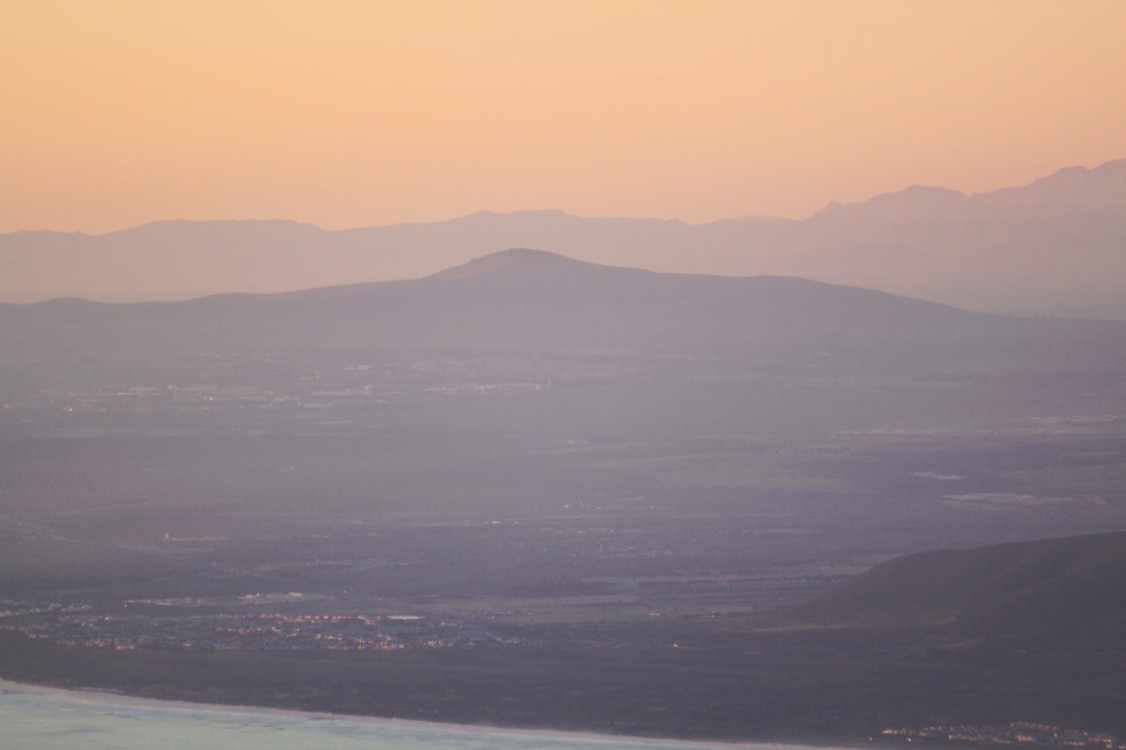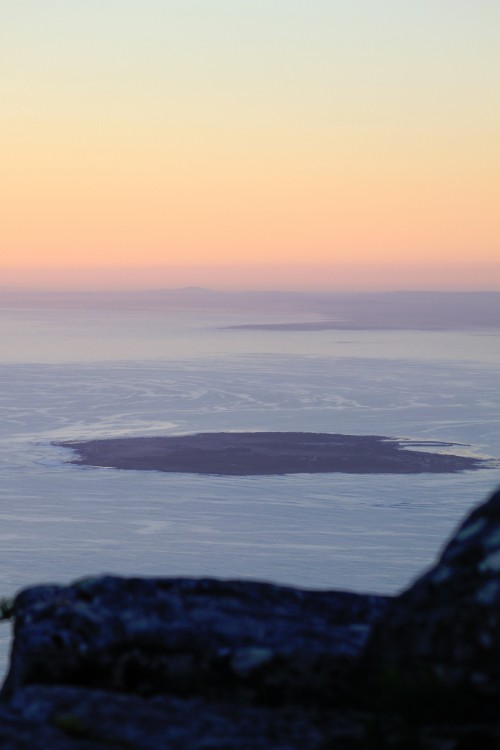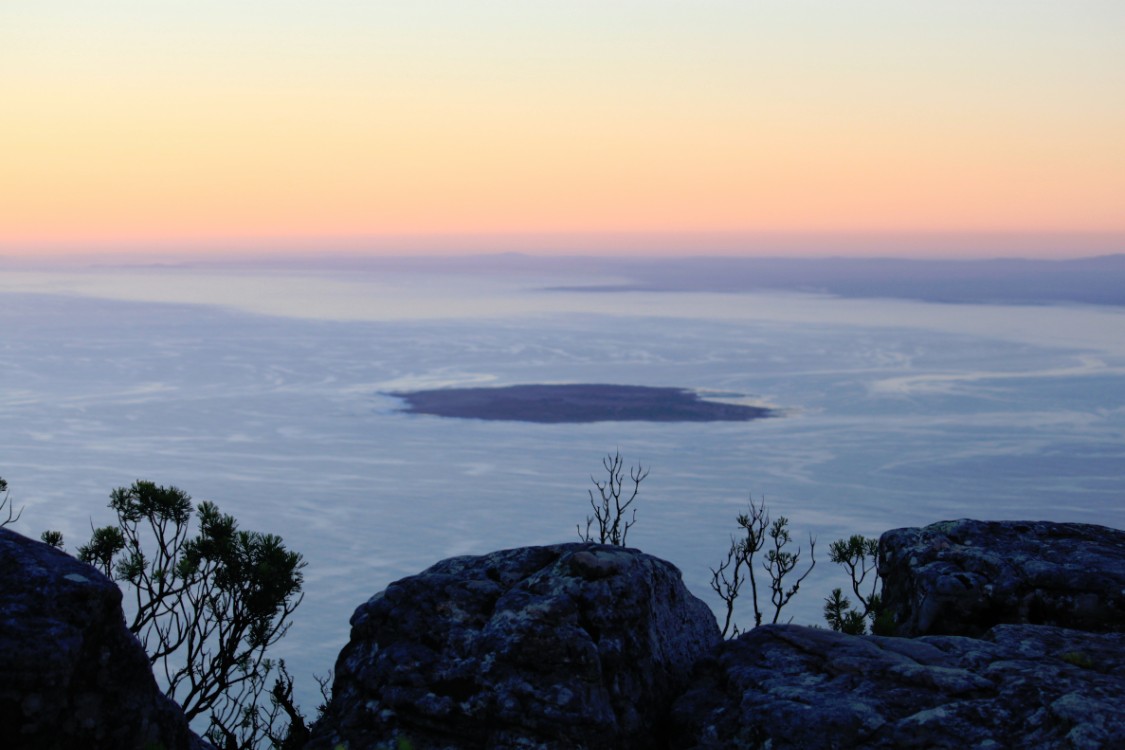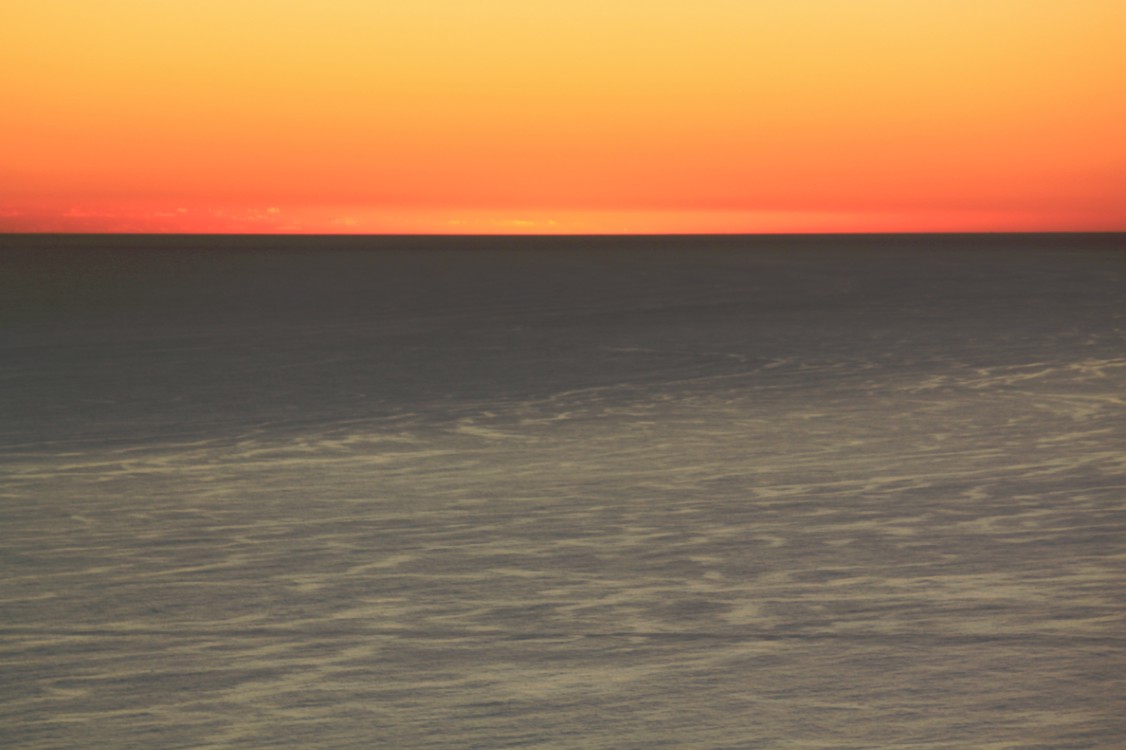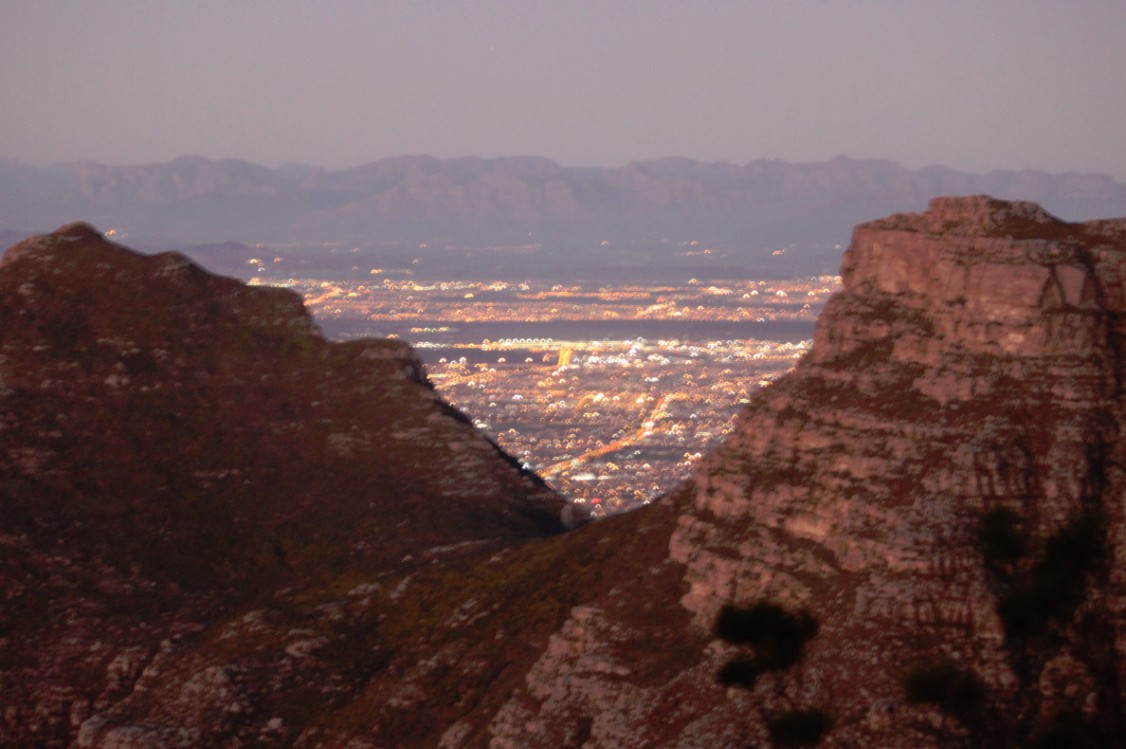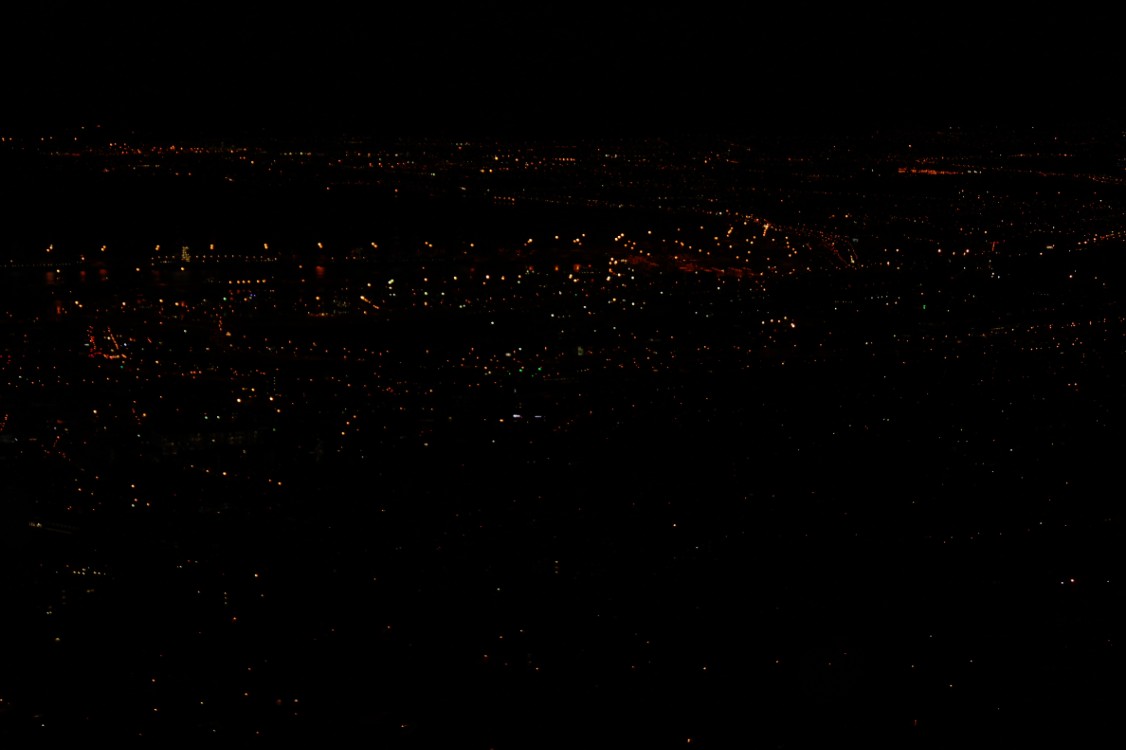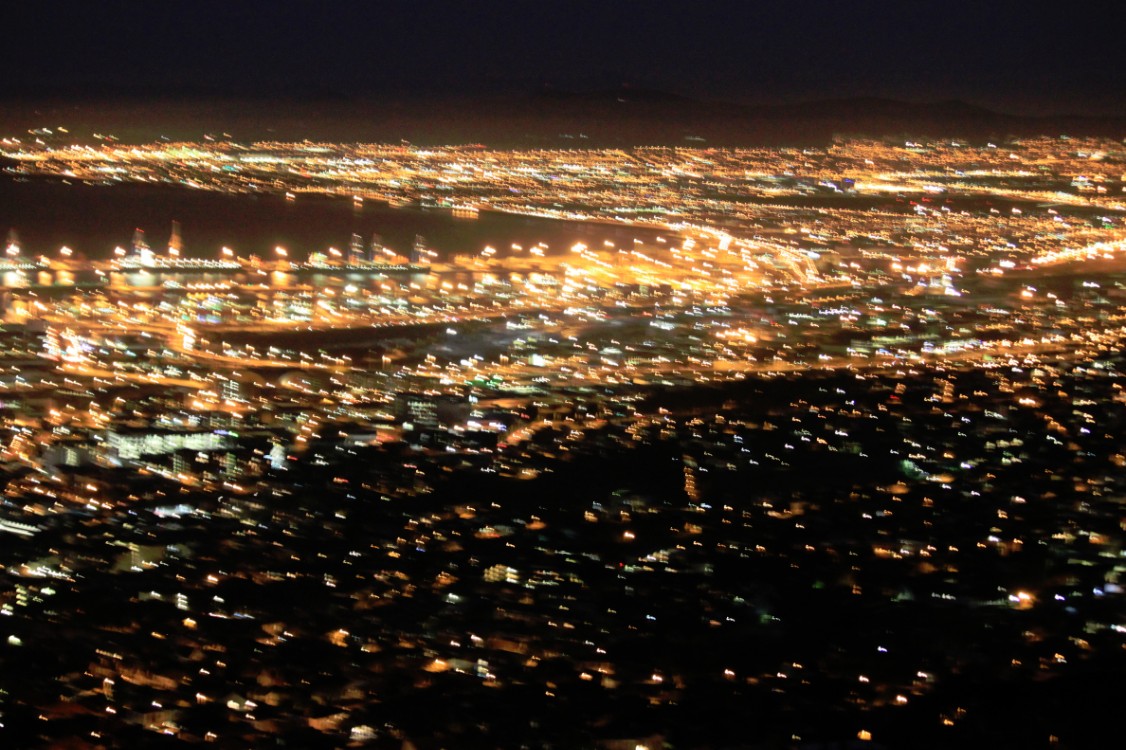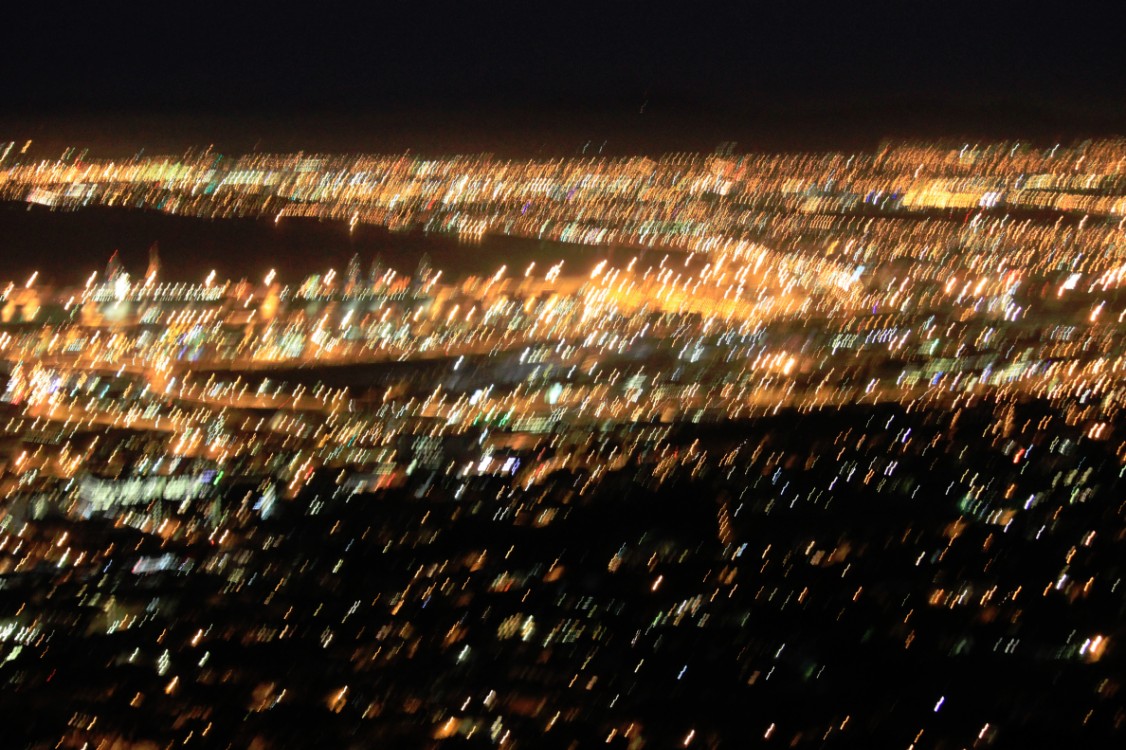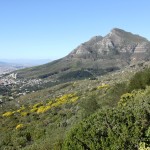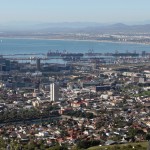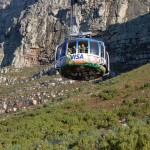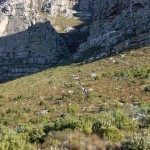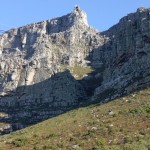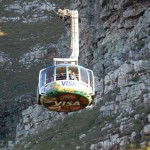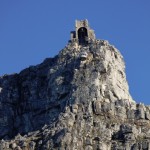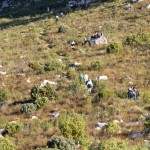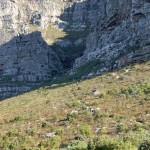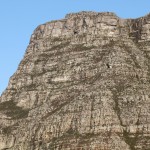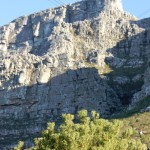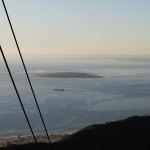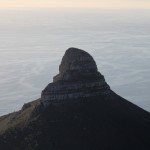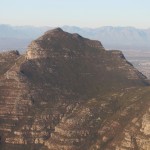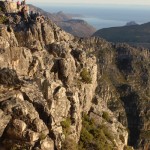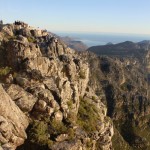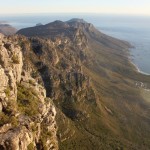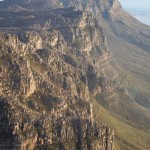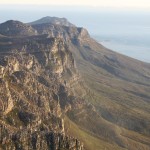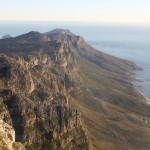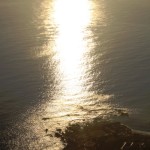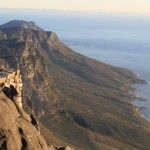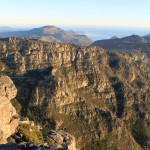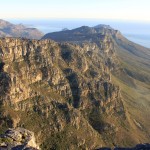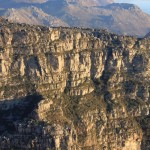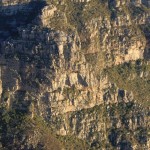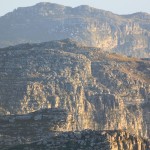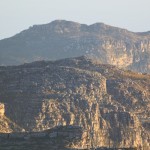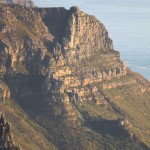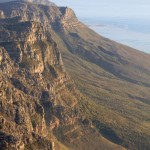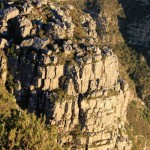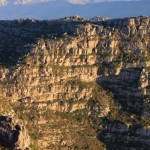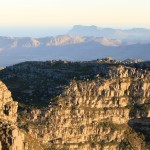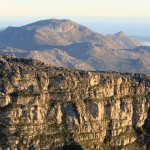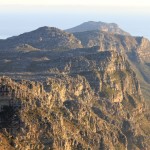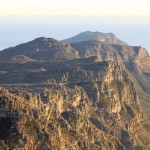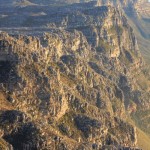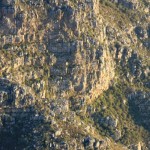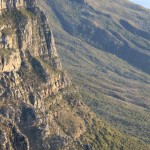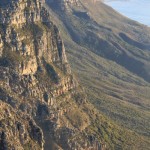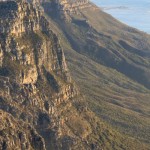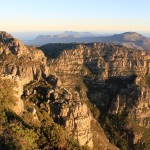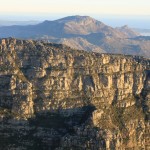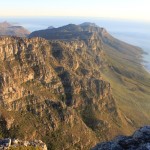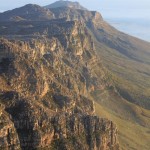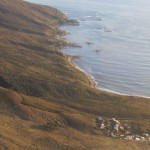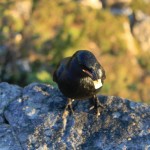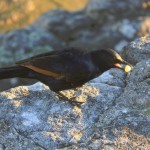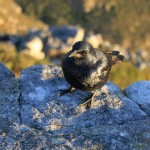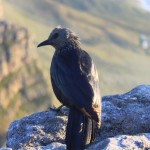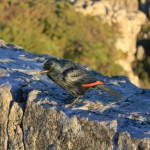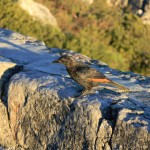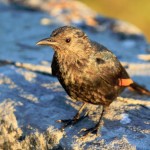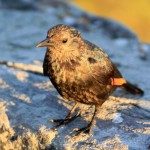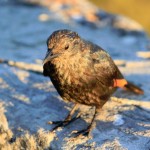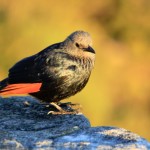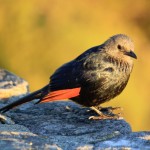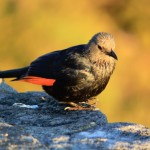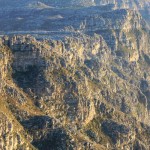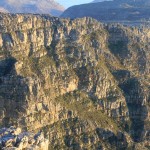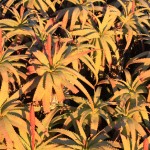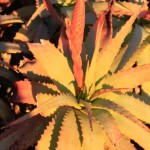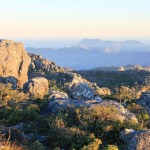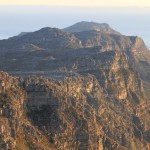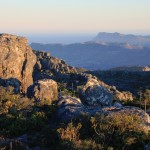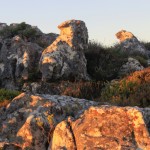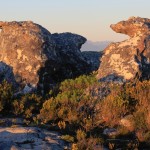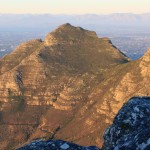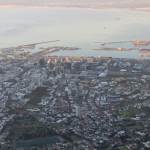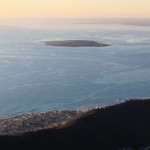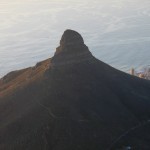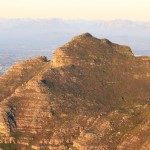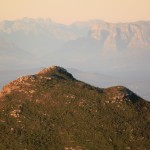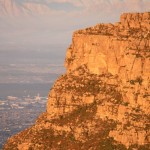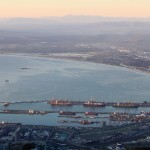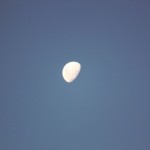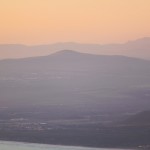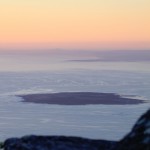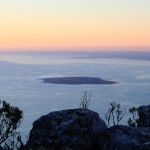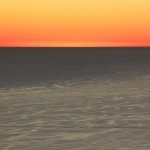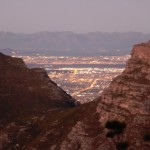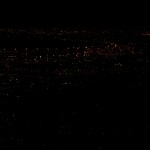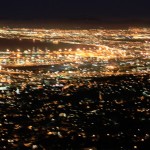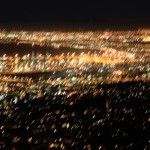2. South Africa – Cape Town: Table Mountain (Table Mountain National Park)
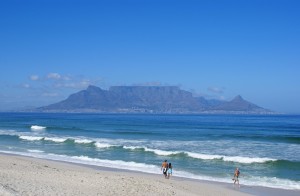
“Table Mountain DanieVDM” by Danie van der Merwe from Cape Town, South Africa – View of Table Mountain from Bloubergstrand. Licensed under CC BY 2.0 via Wikimedia Commons – https://commons.wikimedia.org/wiki/File:Table_Mountain_DanieVDM.jpg#/media/File:Table_Mountain_DanieVDM.jpg
Down there at the base of the mountain is the evocative Cape Town. The city on the utmost southern tip of the African continent. The city, that when it comes to size/population, is the second largest city in South Africa after Johannesburg, bursting with life and feeling pretty European with its busy roads, big malls and its harbor. Down there from Cape Town there are many places overlooking the magnificent Table Mountain, which looms over the city with its flat table-like top. Down there sitting on a terrace in the sun at the Victoria and Alfred Waterfront you simply lift your head in admiration …
… but once above everything is different …

“Cape Town Pano1” by Original uploader was Oberhbe at en.wikipedia – Transfered from en.wikipedia. Licensed under Publiek domein via Wikimedia Commons – https://commons.wikimedia.org/wiki/File:Cape_Town_Pano1.jpg#/media/File:Cape_Town_Pano1.jpg
Above there is only awe. Yes there is a large bustling port town down there, but it utterly dissappears in the overwhelming grandiose, wild, savage forces of nature that you behold above and then you become completely silent.
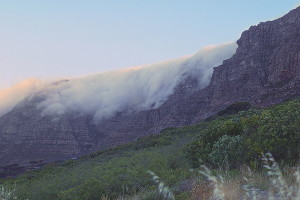
“Cape Town, Table Mountain, Table Cloth” by KodachromeFan – Eigen werk. Licensed under CC BY-SA 3.0 via Wikimedia Commons – https://commons.wikimedia.org/wiki/File:Cape_Town,_Table_Mountain,_Table_Cloth.jpg#/media/File:Cape_Town,_Table_Mountain,_Table_Cloth.jpg
When The Wandelgek arrived in Cape Town on Sunday, July 19th, 2015 Capetown had suffered from weeks of storm winds and heavy rains, low temperatures and cold sea fog. The Wandelgek departed on Saturday, July 18th during heavy storms from the Netherlands. In Cape Town, the cable car to the top of Table Mountain had been mostly closed in recent weeks and the boats to Robben Island did not go. But when The Wandelgek arrived in Cape Town it was at a pleasant temperature of 17 degrees Celsius and the gray clouds that had been there for weeks were completely broken open and he saw more blue than gray or white in the sky. The African winter sun shone quite powerful in the firmament. And his luck didn’t stop there. Not even for a bit … 🙂 There was major maintenance planned for the cable car to Table Mountain, but just that Sunday afternoon when The Wandelgek had arrived in Cape Town, the cable car was open for the very last day, before it would close for months in order for a complete renewal of the cabling.
That’s why it was pretty crowded at the entrance to the cable car. The Wandelgek had taken a taxi from the hotel to the cable car, but taxis were not allowed to come to the entrance. This meant walking up the mountain on a road with lots of trafffic. To avoid this and to get closer to the lift our taxi driver suggested that we should act towards the guardians of the gateway as if we did not want to use the cable car but were going to walk to the top. The guard thought this over for a moment, but then let us pass and we were dropped off neatly at the entrance.
After about two hours of waiting in the queue, The Wandelgek could finally enter the cabin of the car. This was a cylindrical cabin with panoramic windows in all directions and even better was that the cabin itself, while climbing, slowly rotated, which allowed the passengers to have that a wonderful 360 degrees view of the city and the steep mountainside.
On top of it was breathtaking and awesomely beautiful, but very cold and it the wind was quite strong. There was a beautiful walking path along the cliffs from where you had a great view of the mountains in the area and especially over the Table Bay, Robben Island and the Cape Peninsula towards Cape of Good Hope.
Furthermore I was surprised by a few beautiful birds and plants and the strange rocks, eroded by wind and water.
When the sun was setting, everything was even better and the shadows on the mountains were much more pronounced and the rocky mountain ridges colored orange in the waning light of the sun. The sun finally set in the west over the Table Bay. It quickly got much colder and it this reminded The Wandelgek of the fact that became it was still midwinter in South Africa …
Table mountain
Table Mountain (Khoikhoi: Hoerikwaggo, Afrikaans: Tafelberg) is a flat-topped mountain forming a prominent landmark overlooking the city of Cape Town in South Africa, and is featured in the Flag of Cape Town and other local government insignia. It is a significant tourist attraction, with many visitors using the cableway or hiking to the top. The mountain forms part of the Table Mountain National Park.
Table Mountain National Park
Table Mountain National Park, previously known as the Cape Peninsula National Park, is a national park in Cape Town, South Africa, proclaimed on 29 May 1998, for the purpose of protecting the natural environment of the Table Mountain Chain, and in particular the rare fynbos vegetation. The park is managed by South African National Parks. The property is included as part of the UNESCO Cape Floral Region World Heritage Site.
The park contains two well-known landmarks: Table Mountain, for which the park is named; and the Cape of Good Hope, the most southwestern extremity of Africa. Additionally the park also includes the famous Boulder Beach.
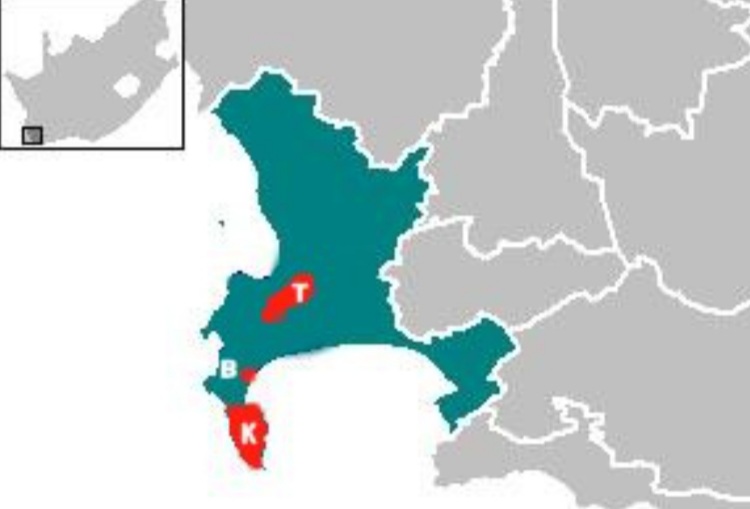
T=Table Mountain, K=Cape of Good Hope, B= Boulder Beach
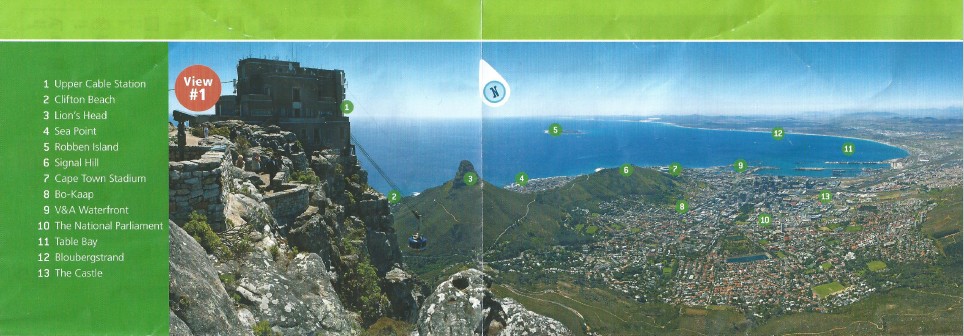
Features
The main feature of Table Mountain is the level plateau approximately 3 kilometres (2 mi) from side to side, edged by impressive cliffs. The plateau, flanked by Devil’s Peak to the east and by Lion’s Head to the west, forms a dramatic backdrop to Cape Town. This broad sweep of mountainous heights, together with Signal Hill, forms the natural amphitheatre of the City Bowl and Table Bay harbour. The highest point on Table Mountain is towards the eastern end of the plateau and is marked by Maclear’s Beacon, a stone cairn built in 1865 by Sir Thomas Maclear for trigonometrical survey. It is 1,086 metres (3,563 ft) above sea level, about 19 metres (62 ft) higher than the cable station at the western end of the plateau.
The cliffs of the main plateau are split by Platteklip Gorge (“Flat Stone Gorge”), which provides an easy and direct ascent to the summit and was the route taken by António de Saldanha on the first recorded ascent of the mountain in 1503.
The flat top of the mountain is often covered by orographic clouds, formed when a south-easterly wind is directed up the mountain’s slopes into colder air, where the moisture condenses to form the so-called “table cloth” of cloud. Legend attributes this phenomenon to a smoking contest between the Devil and a local pirate called Van Hunks. When the table cloth is seen, it symbolizes the contest.
Table Mountain is at the northern end of a sandstone mountain range that forms the spine of the Cape Peninsula. To the south of the main plateau is a lower part of the range called the Back Table. On the Atlantic coast of the peninsula, the range is known as the Twelve Apostles. The range continues southwards to Cape Point.
The main feature of Table Mountain is the level plateau approximately 3 kilometres (2 mi) from side to side, edged by impressive cliffs. The plateau, flanked by Devil’s Peak to the east and by Lion’s Head to the west, forms a dramatic backdrop to Cape Town. This broad sweep of mountainous heights, together with Signal Hill, forms the natural amphitheatre of the City Bowl and Table Bay harbour. The highest point on Table Mountain is towards the eastern end of the plateau and is marked by Maclear’s Beacon, a stone cairn built in 1865 by Sir Thomas Maclear for trigonometrical survey. It is 1,086 metres (3,563 ft) above sea level, about 19 metres (62 ft) higher than the cable station at the western end of the plateau.
The cliffs of the main plateau are split by Platteklip Gorge (“Flat Stone Gorge”), which provides an easy and direct ascent to the summit and was the route taken by António de Saldanha on the first recorded ascent of the mountain in 1503.
The flat top of the mountain is often covered by orographic clouds, formed when a south-easterly wind is directed up the mountain’s slopes into colder air, where the moisture condenses to form the so-called “table cloth” of cloud. Legend attributes this phenomenon to a smoking contest between the Devil and a local pirate called Van Hunks. When the table cloth is seen, it symbolizes the contest.
Table Mountain is at the northern end of a sandstone mountain range that forms the spine of the Cape Peninsula. To the south of the main plateau is a lower part of the range called the Back Table. On the Atlantic coast of the peninsula, the range is known as the Twelve Apostles. The range continues southwards to Cape Point.
Flora
Table Mountain and the Back Table have an unusually rich biodiversity. Its vegetation consists predominantly of several different types of the unique and rich Cape Fynbos. The main vegetation type is endangered Peninsula Sandstone Fynbos, but critically endangered Peninsula Granite Fynbos, Peninsula Shale Renosterveld and Afromontane forest occur in smaller portions on the mountain.
Table Mountain’s vegetation types form part of the Cape Floral Region protected areas. These protected areas are a World Heritage Site, and an estimated 2,200 species of plants are confined to Table Mountain range, of which 9000, including a great many types of proteas, are endemic to these mountains and can be found nowhere else. Of the 2200 species on the Peninsula 1500 occur in the 57 km2 area comprising Table Mountain and the Back Table, a number at least a large as all the plant species in the whole of the United Kingdom. The Disa uniflora, despite its restricted range within the Western Cape, is relatively common in the perennially wet areas (waterfalls, streamlets and seeps) on Table Mountain and the Back Table, but hardly anywhere else on the Cape Peninsula. It is a very showy orchid that blooms from January to March on the Table Mountain Sandstone regions of the mountain. Although they are quite widespread on the Back Table, the best (most certain, and close-up) place to view these beautiful blooms is in the “Aqueduct” off the Smuts Track, halfway between Skeleton Gorge and Maclear’s Beacon.
Remnant patches of indigenous forest persist in the wetter ravines. However, much of the indigenous forest was felled by the early European settlers for fuel for the lime kilns needed during the construction of the Castle. The exact extent of the original forests is unknown, though most of it was probably along the eastern slopes of Devil’s Peak, Table Mountain and the Back Table where names such as Rondebosch, Kirstenbosch, Klassenbosch and Witteboomen survive (in Dutch “bosch” means forest; and “boomen” means trees). Hout Bay (in Dutch “hout” means wood) was another source of timber and fuel as the name suggests. In the early 1900s commercial pine plantations were planted on these slopes all the way from the Constantiaberg to the front of Devil’s Peak, and even on top of the mountains, but these have now been largely cleared allowing fynbos to flourish in the regions where the indigenous Afromontane forests have not survived, or never existed.
Fynbos is a fire adapted vegetation, and evidence suggests that in the absence of regular fires all but the drier fynbos would become dominated by trees. Regular fires have dominated fynbos for at least the past 12 000 years largely as a result of human activity. In 1495 Vasco da Gama named the South African coastline Terra de Fume because of the smoke he saw from numerous fires. This was originally probably to maintain a productive stock of edible bulbs (especially watsonians) and to facilitate hunting, and later, after the arrival of pastoralists, to provide fresh grazing after the rains. Thus the plants that make up fynbos today are those that have been subjected to a variety of fire regimes over a very long period time, and their preservation now requires regular burning. The frequency of the fires obviously determines precisely which mix of plants will dominate any particular region, but intervals of 10–15 years between fires are considered to promote the proliferation of the larger Protea species, a rare local colony of which, the Aulax umbellata (Family: Proteaceae), was wiped out on the Peninsula by more frequent fires, as have been the silky-haired pincushion, Leucospermum vestitum, the red sugarbush, Protea grandiceps and Burchell’s sugarbush, Protea burchellii, although a stand of a dozen or so plants has recently been “rediscovered” in the saddle between Table Mountain and Devil’s Peak. Some bulbs may similarly have become extinct as a result a too rapid sequence of fires. The fires that occur on the mountains today are still largely due to unregulated human activity. Fire frequency is therefore a matter of chance rather than conservation.
Despite intensive conservation efforts the Table Mountain range has the highest concentration of threatened species of any continental area of equivalent size in the world. The non-urban areas of the Cape Peninsula (mainly on the mountains and mountain slopes) have suffered particularly under a massive onslaught of invasive alien plants for well over a century, with perhaps the worst invader being the cluster pine, partly because it was planted in extensive commercial plantations along the eastern slopes of the mountains, north of Muizenberg. Considerable efforts have been made to control the rapid spread of these invasive alien trees. Other invasive plants include Black Wattle, Blackwood, Port Jackson and Rooikrans (All Australian members of the Acacia family), as well as several Hakea species and Bramble.
Fauna
The most common mammal on the mountain was the dassie (the South African name, from Afrikaans, pronounced “dussy”), or rock hyrax. Between about 2000 and 2004 (no one is certain about the exact year or years) their numbers suddenly plummeted for unknown reasons. They used to cluster around the upper cable station, near areas where tourists discarded or (illegally) supplied food. The population crash of the dassies has in all probability been responsible for the decline in the Verreaux’s eagle population on the Peninsula. From 2004 (when monitoring was re-initiated) till 2012 there was only one nesting pair on the cliffs below Noordhoek Peak, (and since then only a single individual), when previously there had been at least three pairs, one of which had a cliff nest near the upper cable station on Table Mountain, in Blinkwater Ravine. Dassies were an important part the Verreaux’s eagle’s prey on the Peninsula. Table Mountain is also home to porcupines, mongooses, snakes, lizards, tortoises, and a rare endemic species of amphibian that is only found on Table Mountain, the Table Mountain ghost frog. The last lion in the area was shot circa 1802. Leopards persisted on the mountains until perhaps the 1920s but are now extinct locally. Two smaller, secretive, nocturnal carnivores, the rooikat (caracal) and the vaalboskat (also called the vaalkat or African wild cat) were once common in the mountains and the mountain slopes. The rooikat continues to be seen on rare occasions by mountaineers but the status of the vaalboskat is uncertain. The mountain cliffs are home to several raptors species, apart from the Verreaux’s eagle. They include the jackal buzzard, booted eagle (in summer), African harrier-hawk, peregrine falcon and the rock kestrel. There are currently (2014) four pairs of African fish eagles on the Peninsula, but they nest in trees generally as far away from human habitation and activity as is possible on the Peninsula.
Up until the late 1990s baboons occurred on all the mountains of the Peninsula, including the Back Table immediately behind Table Mountain. Since then they have abandoned Table Mountain and the Back Table, and only occur south of Constantia Nek. They have also abandoned the tops of many of the mountains, in favor of the lower slopes, particularly when these were covered in pine plantations which seemed to provide them with more, or higher quality food than the Fynbos on the mountain tops. However these new haunts are also within easy reach of Cape Town’s suburbs, which brings them into conflict with humans and dogs, and the risk of traffic accidents. There are now (2014) a dozen troops on the Peninsula, varying in size from 7 to over 100 individuals, scattered on the mountains from the Constantiaberg to Cape Point. The baboon troops are the subject of intense research into their physiology, genetics social interactions and habits. In addition, their sleeping sites are noted each evening, so that monitors armed with paint ball guns can stay with the troop all day, to ward them off from wandering into the suburbs. From when this initiative was started in 2009 the number of baboons on the Peninsula has increased from 350 to 450, and the number of baboons killed or injured by residents has decreased.
Himalayan tahrs, fugitive descendants of tahrs that escaped from Groote Schuur Zoo in 1936, used to be common on the less accessible upper parts of the mountain. As an exotic species, they were almost eradicated through a culling programme initiated by the South African National Parks to make way for the reintroduction of indigenous klipspringers. Until recently there were also small numbers of fallow deer of European origin and sambar deer from southeast Asia. These were mainly in the Rhodes Memorial area but during the 1960s they could be found as far afield as Signal Hill. These animals may still be seen occasionally despite efforts to eliminate or relocate them.
On the lower slopes of Devil’s Peak, above Groote Schuur Hospital an animal camp bequeathed to the City of Cape Town by Cecil John Rhodes has been used in recent years as part of the Quagga Project. The quagga used to roam the Cape Peninsula, the Karoo and the Free State in large numbers, but were hunted to extinction during the early 1800s. The last quagga died in an Amsterdam zoo in 1883. In 1987 a project was launched by Reinhold Rau to back-breed the quagga, after it had been established, using mitochondrial DNA obtained from museum specimens, that the quagga was closely related to the plains zebra, and on 20 January 2005 a foal considered to be the first quagga-like individual because of a visible reduced striping, was born. These quagga-like zebra are officially known as Rau quagga, as no one can be certain that they are anything more than quagga look-alikes. The animal camp above Groote Schuur Hospital has several good looking Rau quaggas, but they are unfortunately not easily seen except from within the game camp, which is quite large and undulating, and the animals are few. The animal camp in not open to the public.
History
Prehistoric inhabitation of the district is well attested (see for example the article on Fish Hoek). About 2000 years ago the Khoikhoi migrated towards the Cape Peninsula from the north, displacing the San and bringing with them their herds of cattle and sheep. It was the Khoikhoi who were the dominant local tribe when the Europeans first sailed into Table Bay.
António de Saldanha was the first European to land in Table Bay. He climbed the mighty mountain in 1503 and named it Taboa do Cabo (Table of the Cape, in his native Portuguese). The great cross that the Portuguese navigator carved into the rock of Lion’s Head is still traceable.
In 1796, during the British occupation of the Cape, Major-General Sir James Craig ordered three blockhouses to be built on Table Mountain: the King’s blockhouse, Duke of York blockhouse (later renamed Queen’s blockhouse) and the Prince of Wales blockhouse. Two of these are in ruins today, but the King’s blockhouse is still in good condition. and easily accessible from the Rhodes Memorial.
Between 1896 and 1907, five dams, the Woodhead, Hely-Hutchinson, De Villiers, Alexandria and Victoria reservoirs, were opened on the Back Table to supply Cape Town’s water needs. A ropeway ascending from Camps Bay via Kasteelspoort ravine was used to ferry materials and manpower (the anchor points at the old top station can still be seen). There is a well-preserved steam locomotive from this period housed in the Waterworks Museum at the top of the mountain near the Hely-Hutchinson dam. It had been used to haul materials for the dam across the flat top of the mountain. Cape Town’s water requirements have since far outpaced the capacity of the dams and they are no longer an important part of the water supply.
The mountain became part of the new Cape Peninsula National Park in the 1990s. The park was renamed to the Table Mountain National Park in 1998.
Fires are common on the mountain. The most recent major fire came in January 2006, destroying large amounts of vegetation and resulting in the death of a tourist. A charge of arson and culpable homicide was laid against a British man who was suspected of starting the blaze.
In November 2011, Table Mountain was named one of the new seven wonders according to votes received, but the official result of the new natural wonders are still to be presented to the world by the New7Wonders of the World.
The Cableway
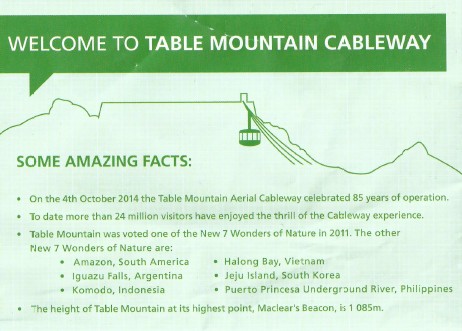 The Table Mountain Cableway takes passengers from the lower cable station on Tafelberg Road, about 302 m above sea level, to the plateau at the top of the mountain. The upper cable station offers views overlooking Cape Town, Table Bay and Robben Island to the north, and the Atlantic seaboard to the west and south.
The Table Mountain Cableway takes passengers from the lower cable station on Tafelberg Road, about 302 m above sea level, to the plateau at the top of the mountain. The upper cable station offers views overlooking Cape Town, Table Bay and Robben Island to the north, and the Atlantic seaboard to the west and south.
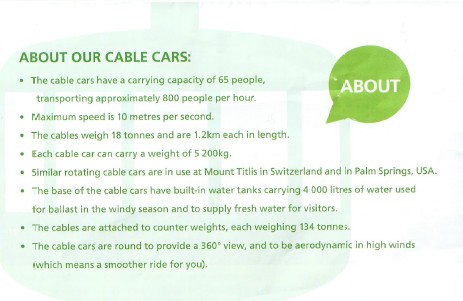 Construction of the cableway was first started in 1926, and the cableway was officially opened in 1929. In 1997, the cableway was extensively upgraded, and new cars were introduced carrying 65 instead of 25 passengers. The new cars give a faster journey to the summit, and rotate through 360 degrees during the ascent or descent, giving a panoramic view over the city.
Construction of the cableway was first started in 1926, and the cableway was officially opened in 1929. In 1997, the cableway was extensively upgraded, and new cars were introduced carrying 65 instead of 25 passengers. The new cars give a faster journey to the summit, and rotate through 360 degrees during the ascent or descent, giving a panoramic view over the city.
The top cable station offers viewpoints, curio shops, a restaurant and walking trails of various lengths.
Activities
Hiking on Table Mountain
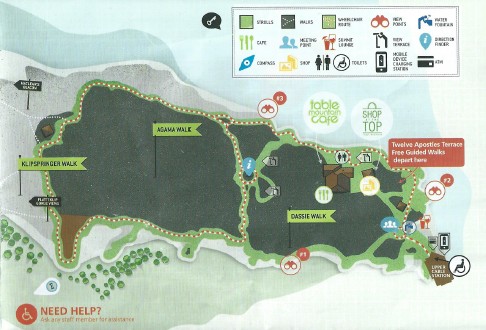 Hiking on Table Mountain is popular amongst locals and tourists, and a number of trails of varying difficulty are available. Because of the steep cliffs around the summit, direct ascents from the city side are limited. Platteklip Gorge, a prominent gorge up the centre of the main table, is a popular and straightforward direct ascent to the summit. Par for the course is about 2.5 hours but is done between 1–3 hours depending on one’s fitness level.
Hiking on Table Mountain is popular amongst locals and tourists, and a number of trails of varying difficulty are available. Because of the steep cliffs around the summit, direct ascents from the city side are limited. Platteklip Gorge, a prominent gorge up the centre of the main table, is a popular and straightforward direct ascent to the summit. Par for the course is about 2.5 hours but is done between 1–3 hours depending on one’s fitness level.
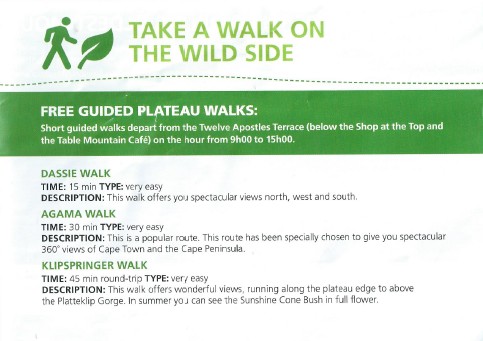 Longer routes to the summit go via the Back Table, a lower area of Table Mountain to the south of the main plateau. From the Southern Suburbs side, the Nursery Ravine and Skeleton Gorge routes start at Kirstenbosch National Botanical Garden. The route via Skeleton Gorge to Maclear’s Beacon is known as Smuts Track in memory of Jan Smuts, who was a keen hiker. The Bridle Path, or Jeep Track, makes a more gradual ascent from Constantia Nek along the road used to service the dams on Back Table. There are many other paths in popular walking areas on the lower slopes of the mountain accessed from Constantia Nek, Cecilia Park, Kirstenbosch, Newlands Forest and Rhodes Memorial.
Longer routes to the summit go via the Back Table, a lower area of Table Mountain to the south of the main plateau. From the Southern Suburbs side, the Nursery Ravine and Skeleton Gorge routes start at Kirstenbosch National Botanical Garden. The route via Skeleton Gorge to Maclear’s Beacon is known as Smuts Track in memory of Jan Smuts, who was a keen hiker. The Bridle Path, or Jeep Track, makes a more gradual ascent from Constantia Nek along the road used to service the dams on Back Table. There are many other paths in popular walking areas on the lower slopes of the mountain accessed from Constantia Nek, Cecilia Park, Kirstenbosch, Newlands Forest and Rhodes Memorial.
On the Atlantic side, the most popular ascent is Kasteelspoort, a gorge overlooking Camps Bay, while the Pipe Track is a level route popular with walkers.
The Hoerikwaggo Trails are four hiking trails on Table Mountain ranging from two to six days, operated by South African National Parks. The original inhabitants of the area, the Khoekhoen and San tribes called Table Mountain Hoerikwaggo – “sea mountain”. The four Table Mountain hiking trails are called the People’s Trail, Table Mountain Trail, Orangekloof Hiking Trail and Top to Tip Trail.
Rock climbing
Rock climbing on Table Mountain is a very popular pastime. There are well-documented climbing routes of varying degrees of difficulty up the many faces of the mountain. The main climbs are located on cliffs below the upper cable station. No bolting can be done here and only traditional climbing is allowed. Commercial groups also offer abseiling from the upper cable station.
Caving
Most of the world’s important caves occur in limestone but Table Mountain is unusual in having several large cave systems that have developed in sandstone. The biggest systems are the Wynberg Caves, located on the Back Table, not far from the Jeep Track, in ridges overlooking Orange Kloof and Hout Bay.
Mountain Biking
The slopes of Table Mountain have many jeep tracks that allow mountain biking. The route to the Block House is a popular route for bike riding. Plum Pudding is the name of a very steep jeep track. Bike riders should follow the directional signs on display for mountain bike riders.
“Mensa” constellation
Table Mountain is the only terrestrial feature to give its name to a constellation: Mensa, meaning The Table. The constellation is seen in the Southern Hemisphere, below Orion, around midnight in mid-July. It was named by the French astronomer Nicolas de Lacaille during his stay at the Cape in the mid 18th century.

